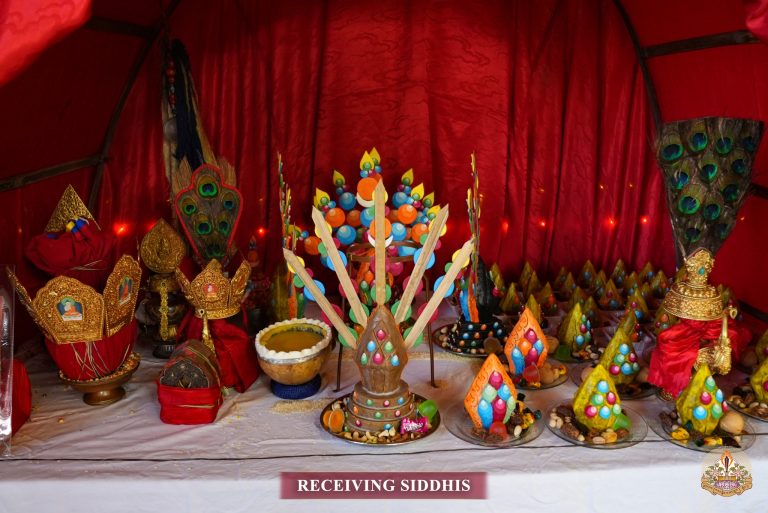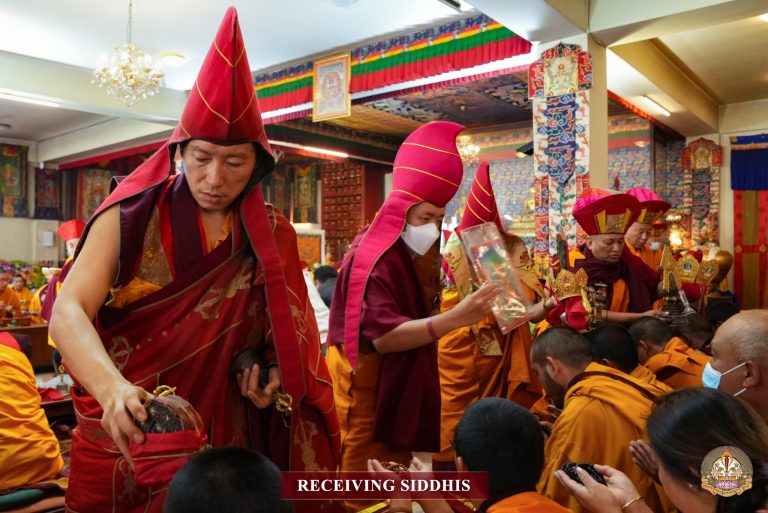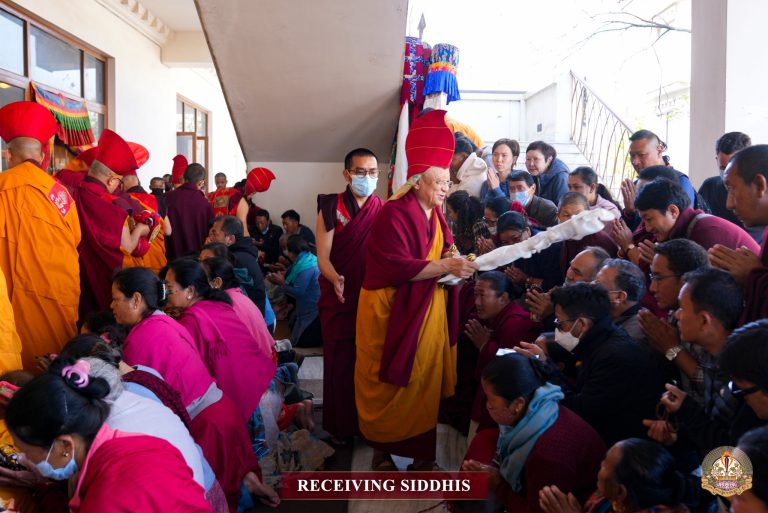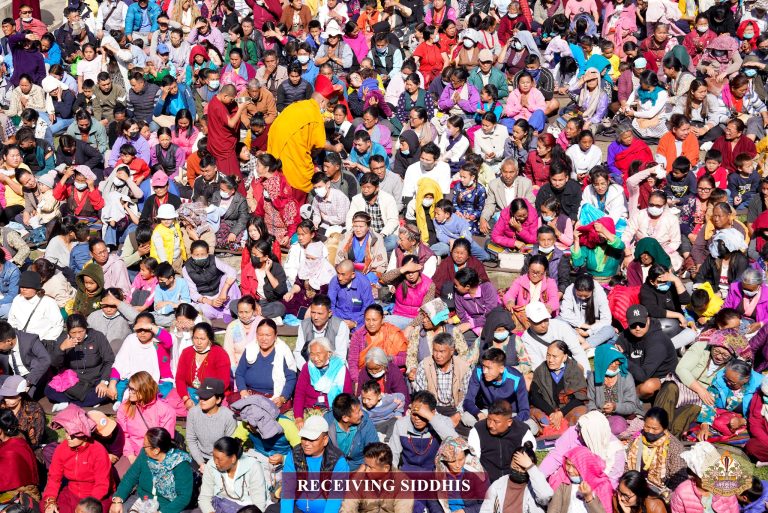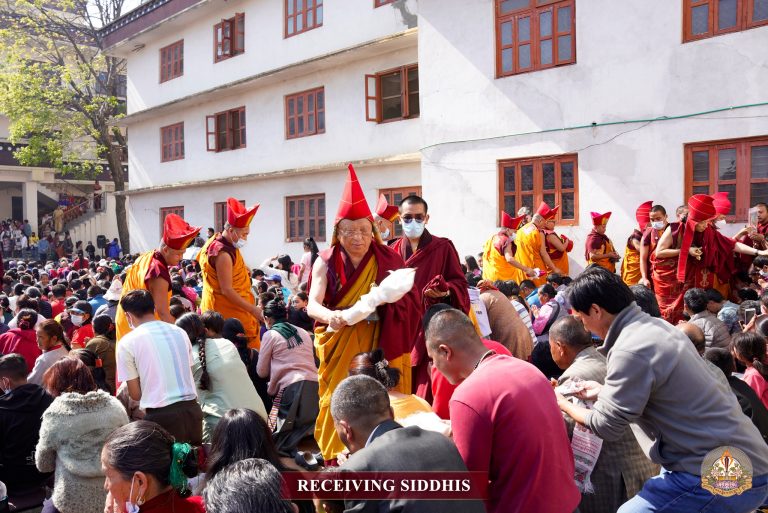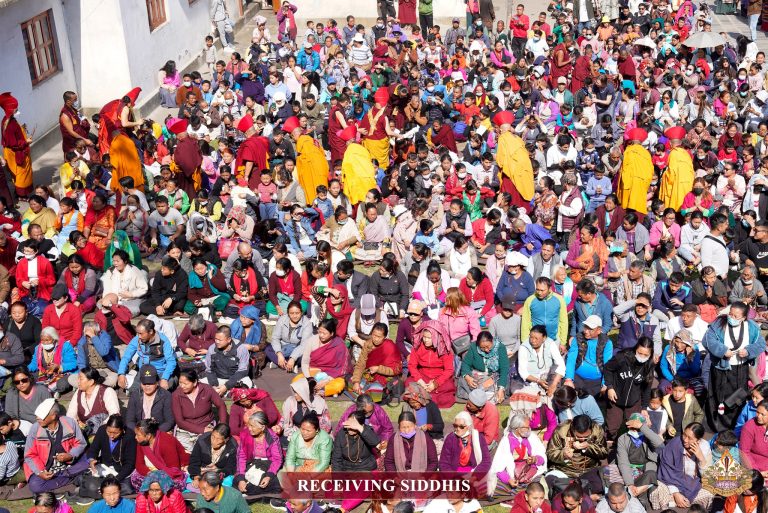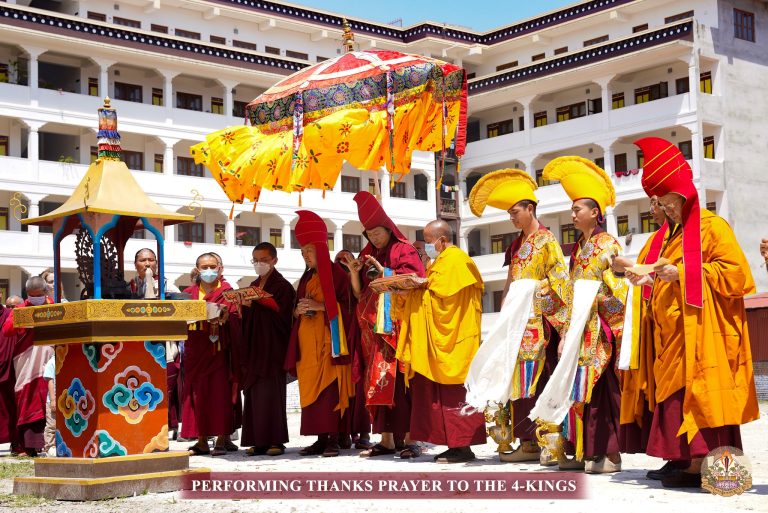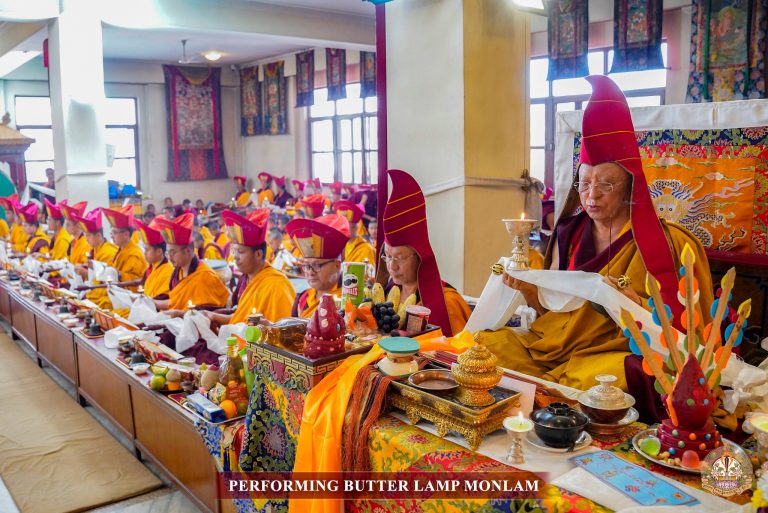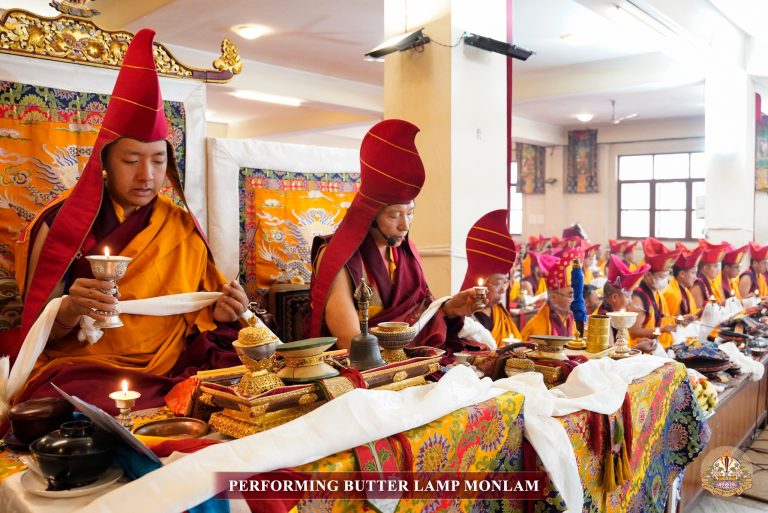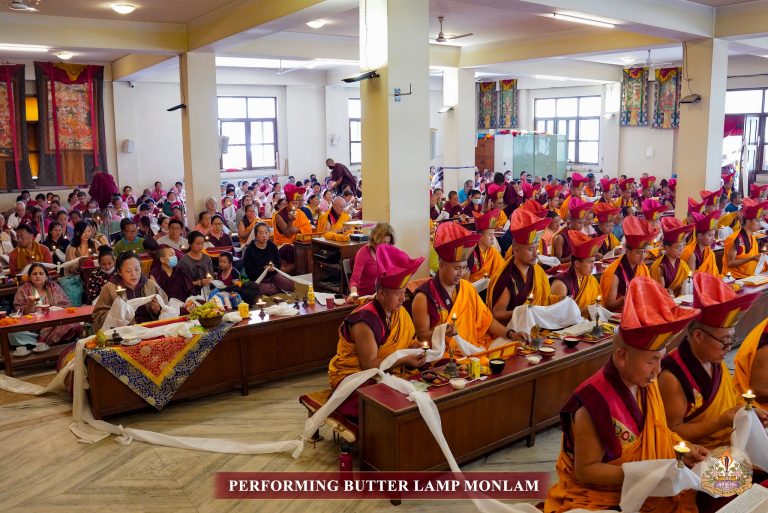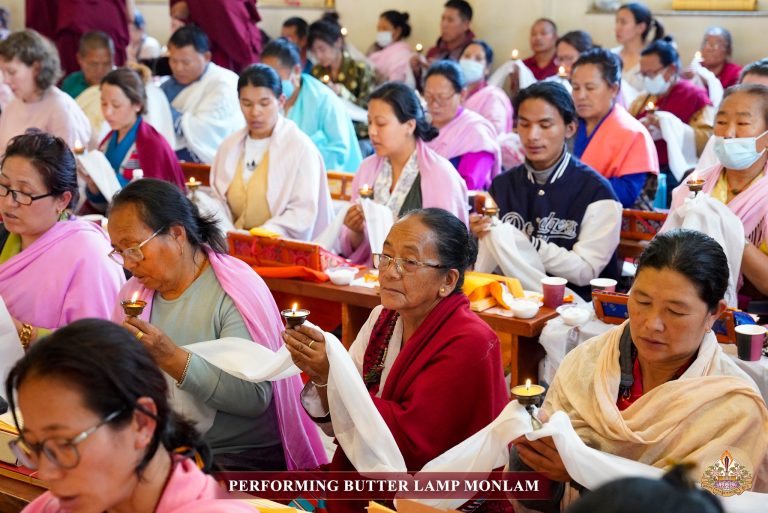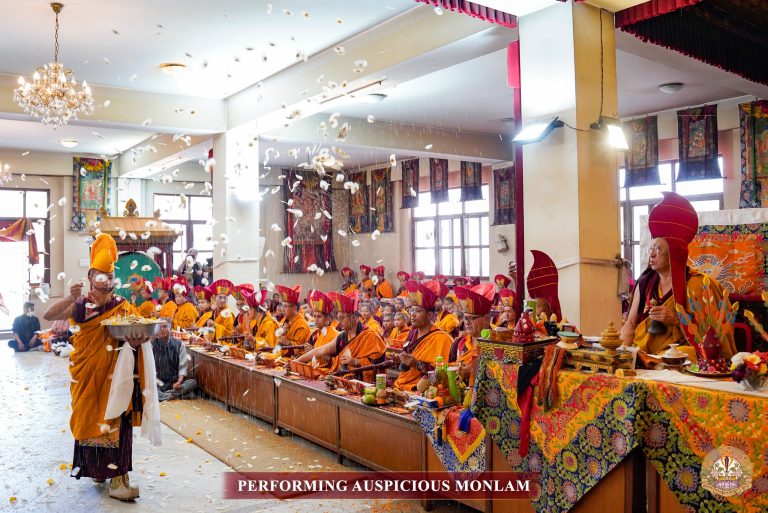The Ocean of Amṛta (Ngakso) Drubchen is performed each year by the monks of Ka-Nying Shedrub Ling Monastery on the 8th – 16th days of the second month in the Tibetan calendar.
The Ngakso Drubchen was composed by the great terton, Chokgyur Dechen Lingpa, and was later practiced by Tulku Urgyen Rinpoche (the great-grandson of Chokgyur Dechen Lingpa and father of H.E. Chökyi Nyima Rinpoche) and became one of the annual events at Ka-Nying Shedrub Ling monastery.
The main purpose of the Ngakso Drubchen is to purify negative karma, restore broken samaya (spiritual commitments), and dispel obstacles – including for those who have passed away.
It is an intensive ritual where the practices and recitation of mantras are continued without interruption for 24 hours a day, for nine days. The monks take shifts to keep this ongoing. On the last day, the Drubchen concludes with the distribution of blessings, amṛta, and tsok to all the monks, nuns, and lay people gathered at the monastery.
Make an offering CLOSED NOW FOR OFFERINGS AND NAMES
If you are unable to make an offering but would like to be included in the Ocean of Amṛta (Ngakso) Drubchen at Ka-Nying Shedrub Ling Monastery, please send your name(s) to [email protected].
Day 1
In the morning of the first day, Sang Pūjā and Wrathful Fire Pūjā are performed at two locations inside the monastery by two groups of monks. Sang Pūjā is offered to the Three Jewels, Deities, local spirits, and all sentient beings to gain protection, whereas Wrathful Fire Pūjā is performed to remove obstacles.
The afternoon is focused on the preparatory activities for the Drubchen. First, Bhumi (Land) Pūjā is performed. Tormas are offered to the Beings of the land to request permission to use the land and to the 4 Kings of the four directions to protect all sentient beings during the Drubchen. The monks circumambulate the monastery while making this offering to the 4 Kings. Additionally, a hole is dug in front of the old Lhakhang to bury ritual materials, followed by a ritual dance to signify the burying of all obstacles. Finally, the Yamantaka Mantra and objects representing the Deity are hung at the monastery gate by the monks for protection.
Second, the Preparatory Ritual for the Deity is performed. Vajrasattva Pūjā with Mantra recitation is chanted for purification. Next is the creation of the large Mandala (Kilkhor) which will remain in place throughout the Drubchen. The main Deities of Thukdrub Barche Kunsel, all peaceful Deities, and all wrathful Deities are placed with reverence inside the Mandala.
Third, Implements Necessary for the Pūjā are prepared such as Tormas, ritual instruments, food, medicine, Tsok, and representation/shrine objects of body, speech, and mind.
Fourth is the Preparation of the Participants. Participants take Amṛta and are assigned different roles for the Pūjā such as Vajra Master, Chant Master, Discipline Master, and more.



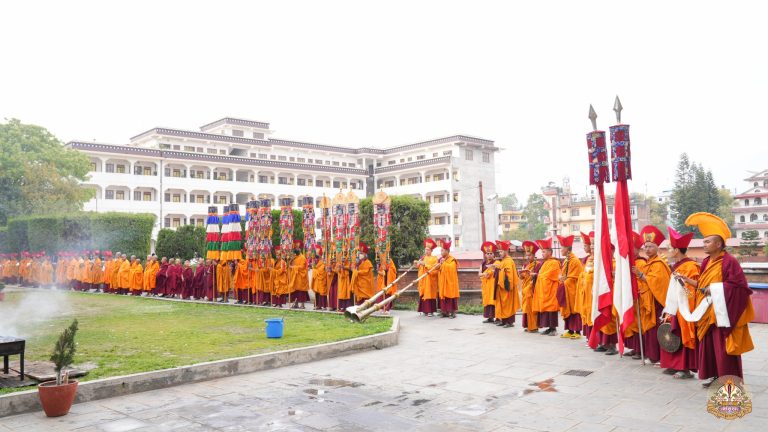
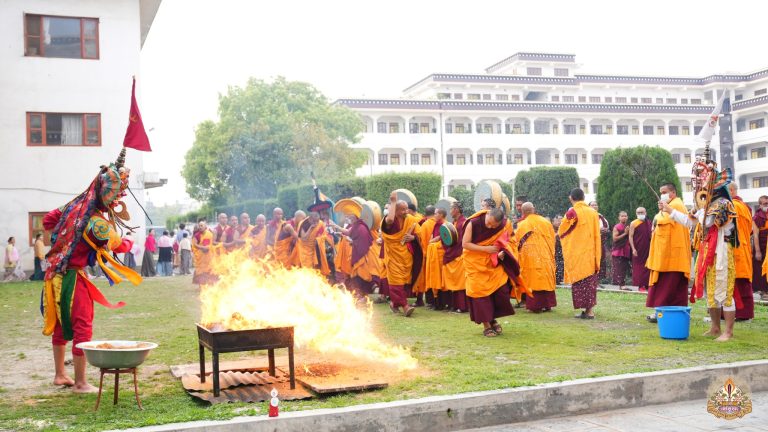
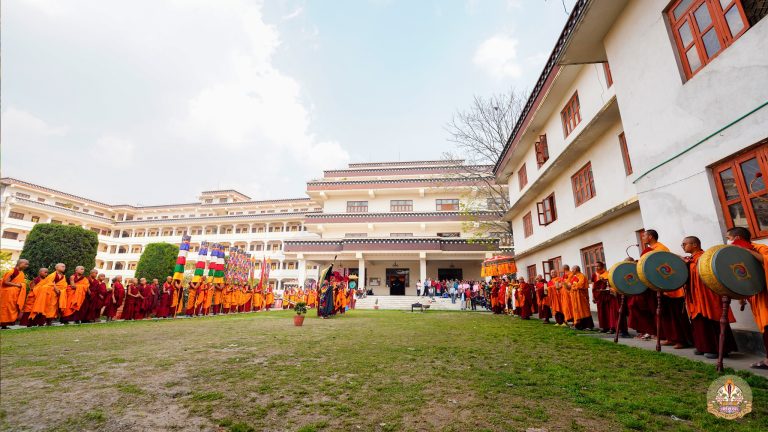
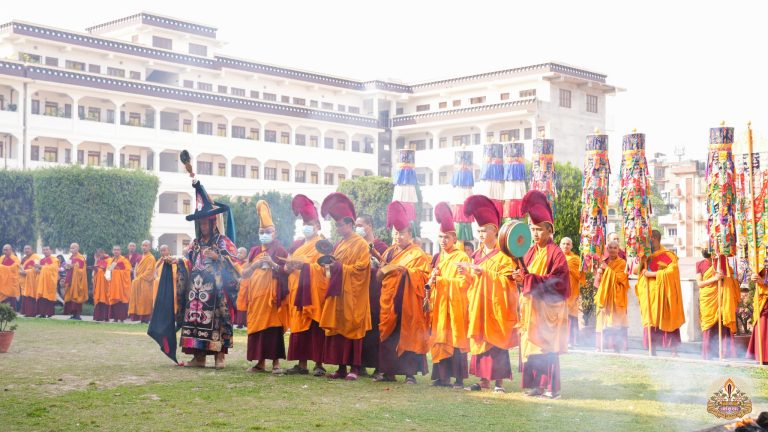

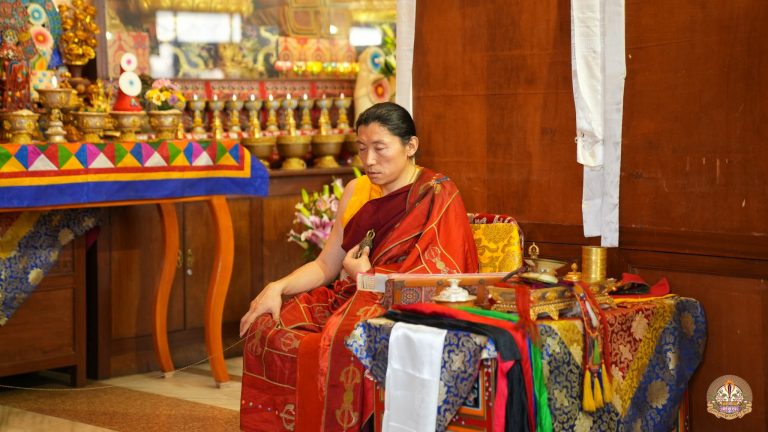
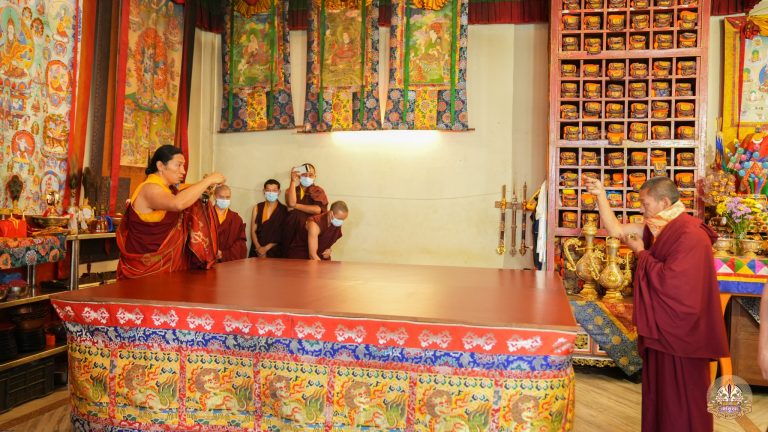
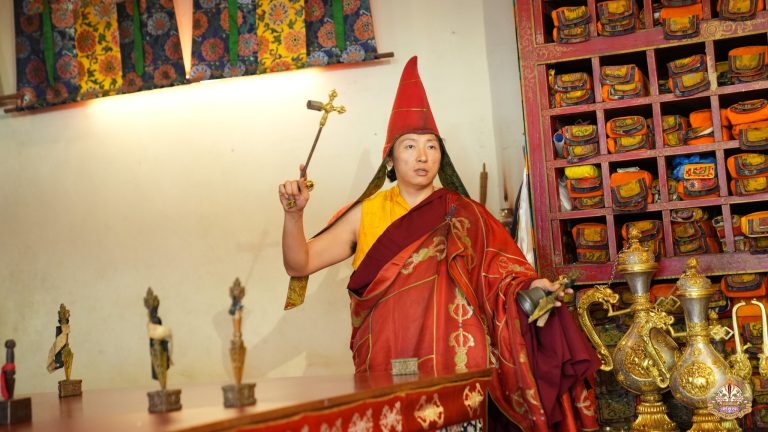
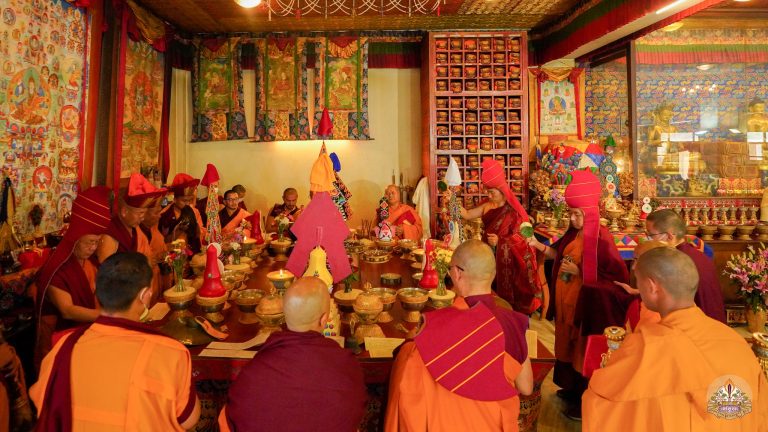
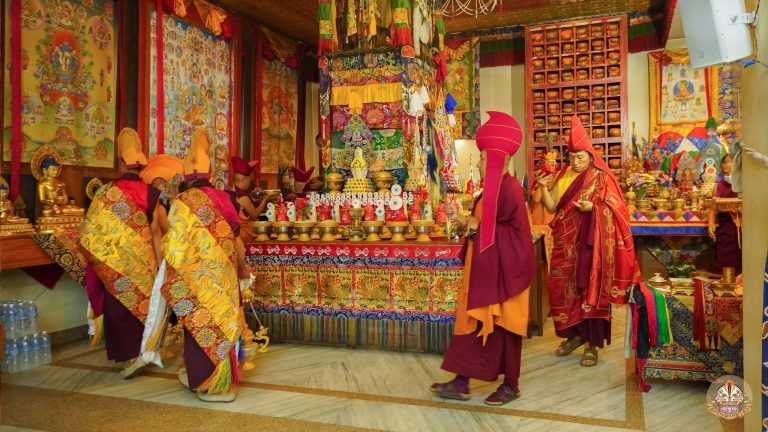
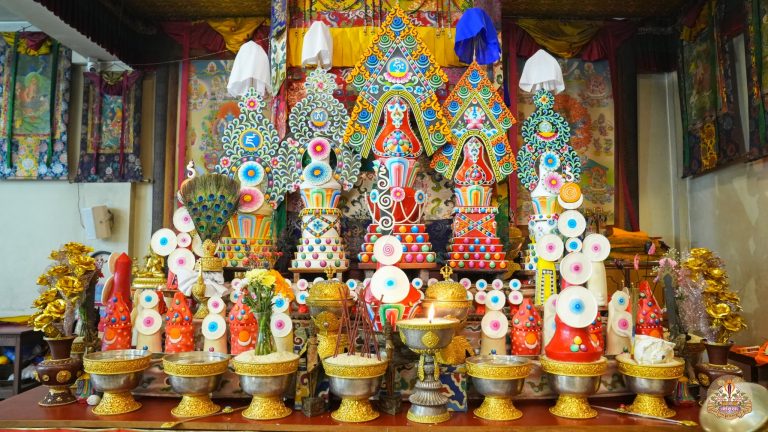
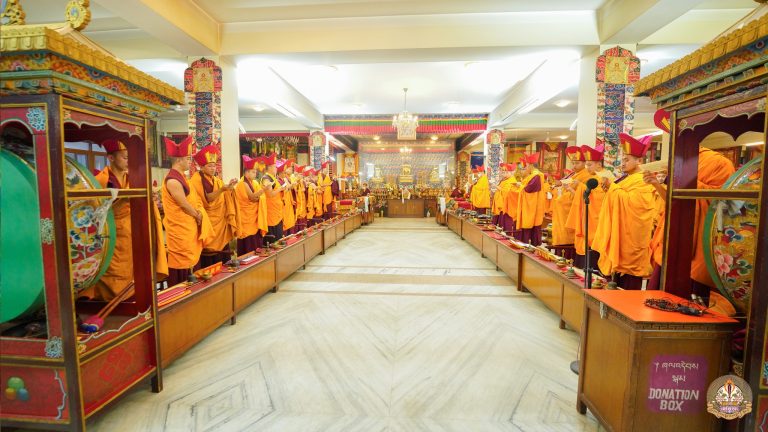
Fire Pūjās
During the Drubchen, all four types of Fire Pūjās are performed. The Wrathful Fire Pūjā is performed on the first day with the aspiration that all obstacles are removed. The Pacifying Fire Pūjā is performed on the third day with the aspiration that there is peace in the minds of all sentient beings. The Magnetizing Fire Pūjā is performed on the eighth day with the aspiration that all beings are happy, have independent minds, and success. This Fire Pūjā prepares the participants to obtain the Siddhis on the last day of the Drubchen. The Increasing Fire Pūjā is performed on the ninth day with the aspiration that there is enough rain at the right time, the harvest is marvelous, the five elements are balanced, and all sentient beings have long lives.
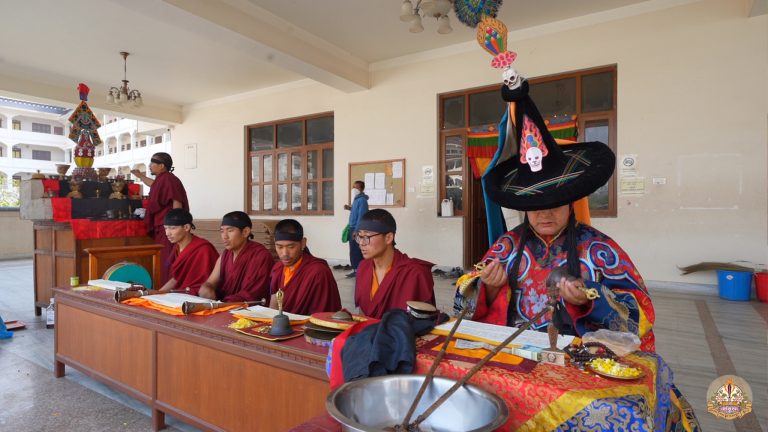
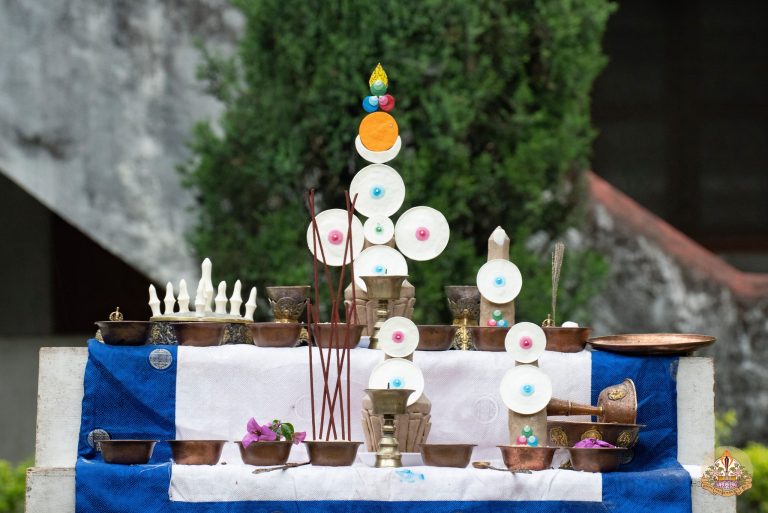
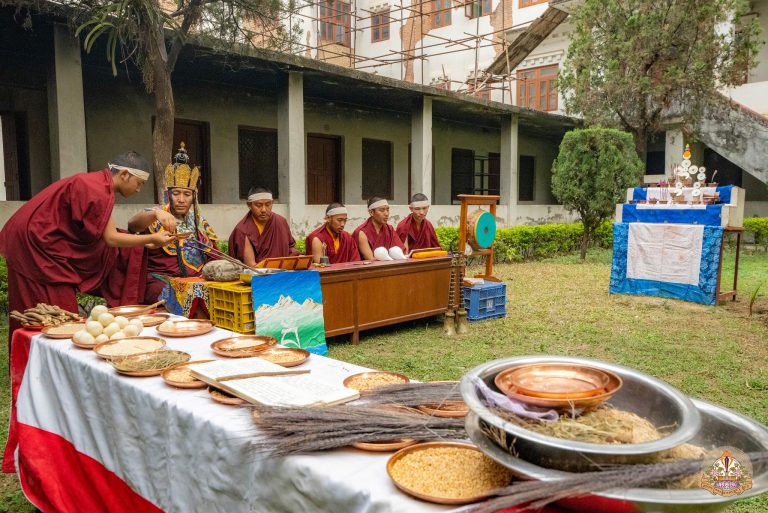
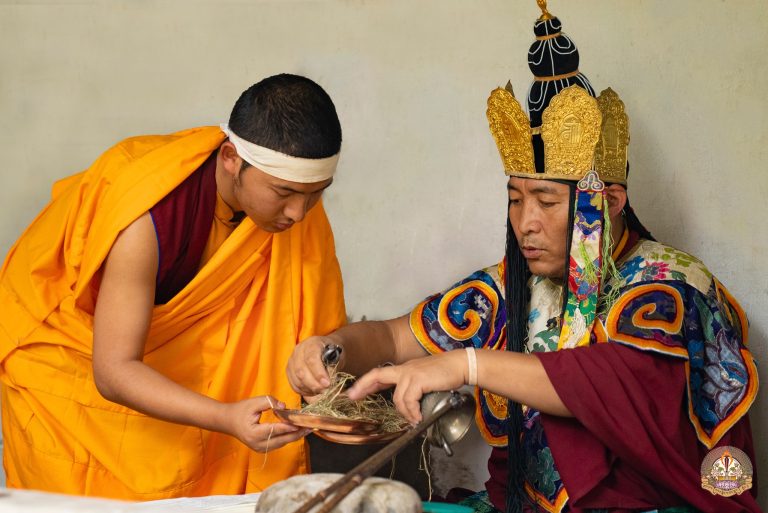
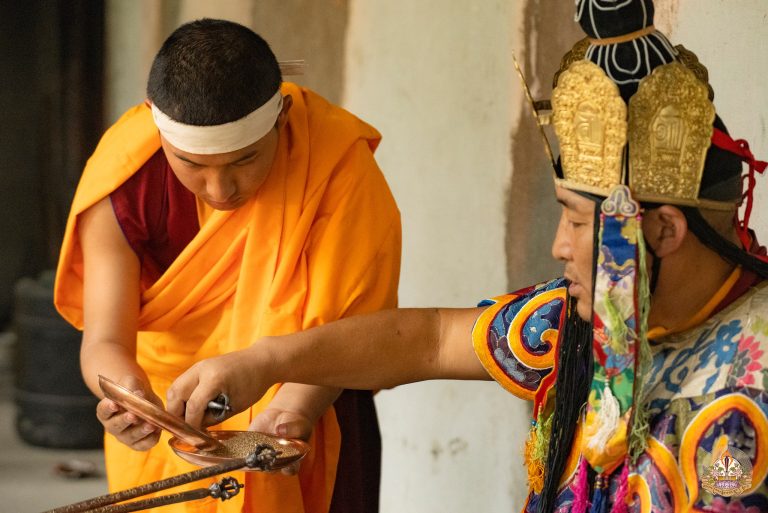
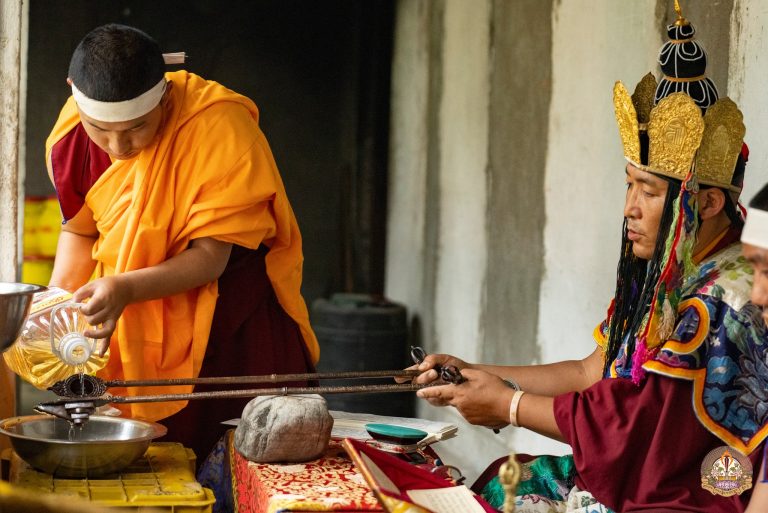
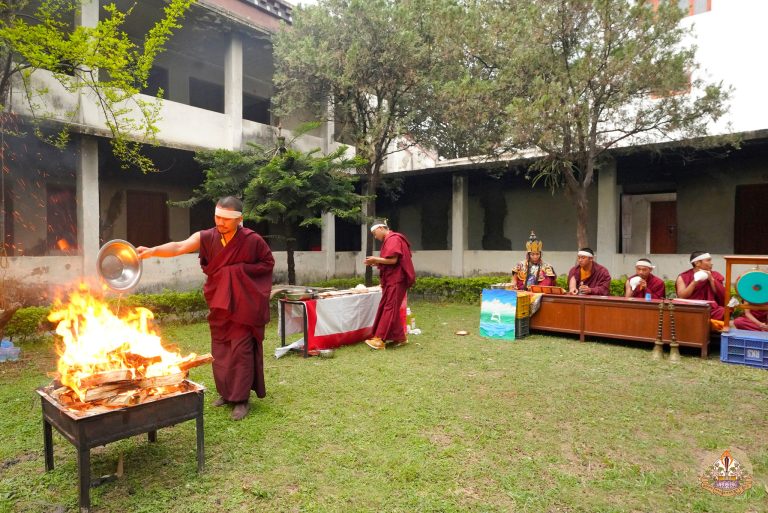
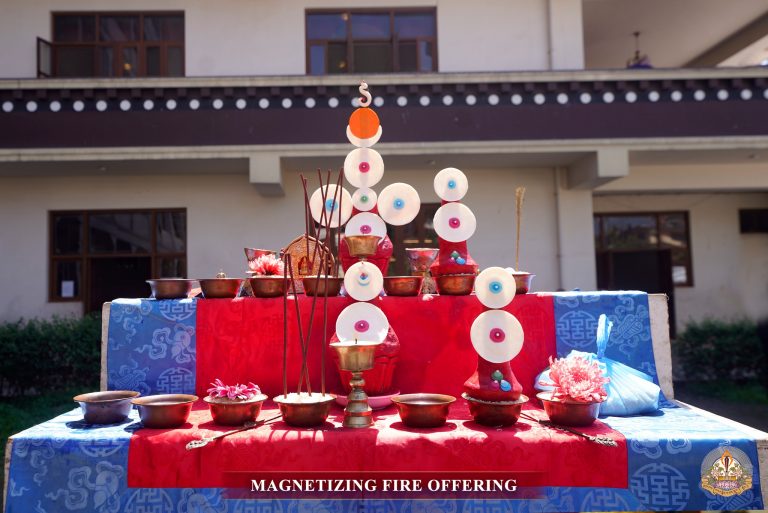
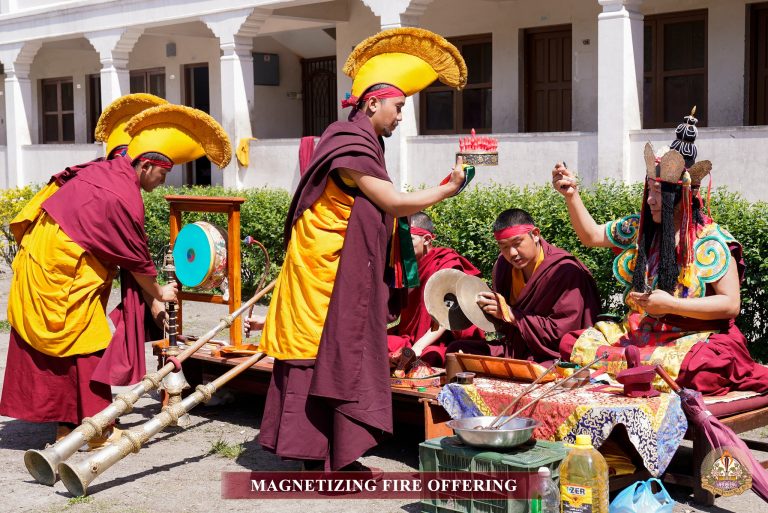
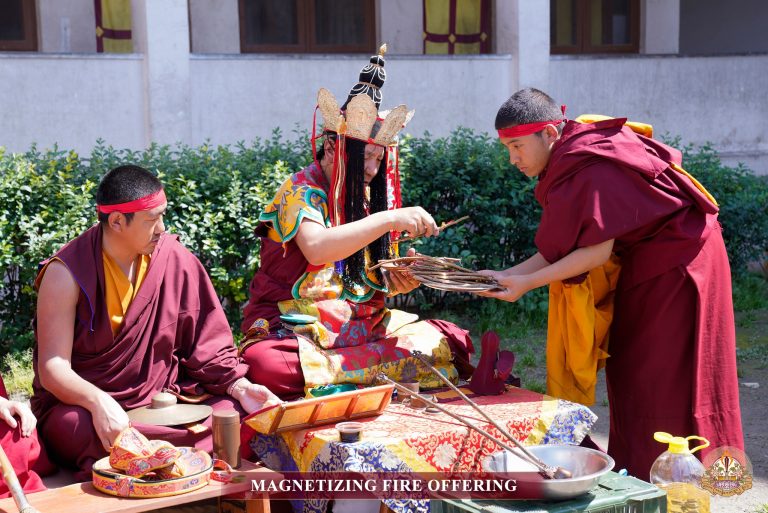
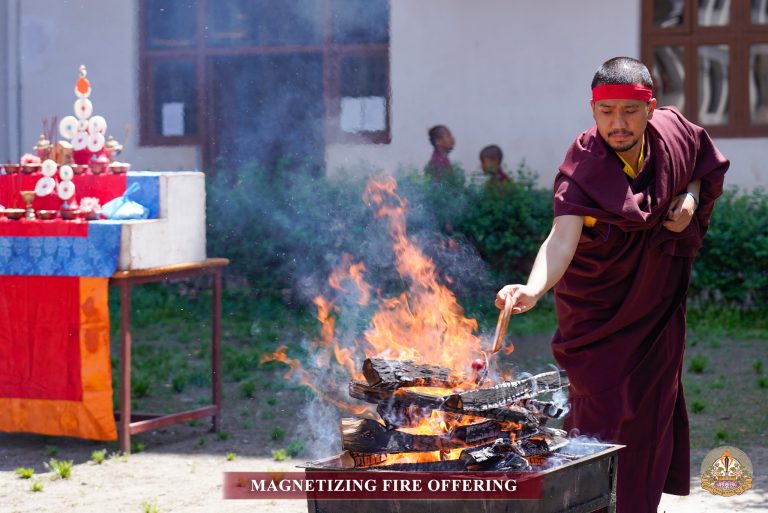
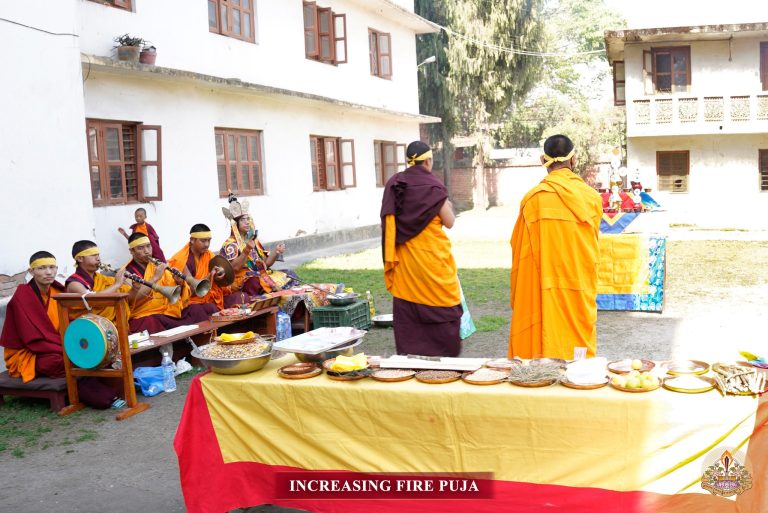
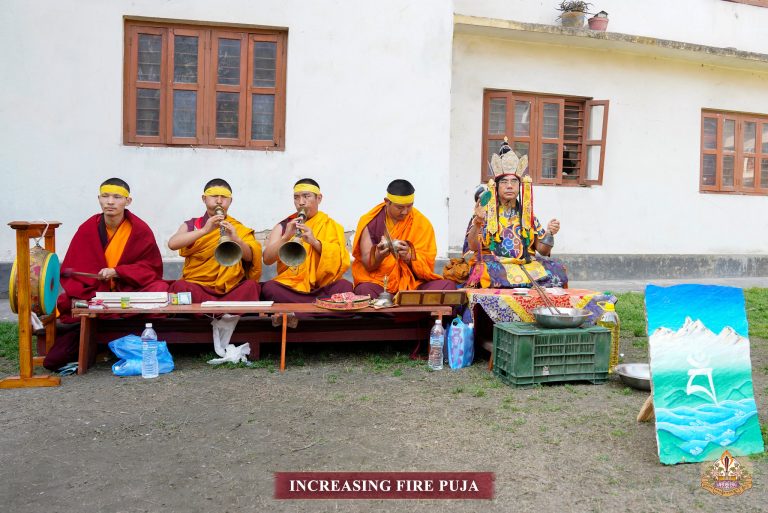
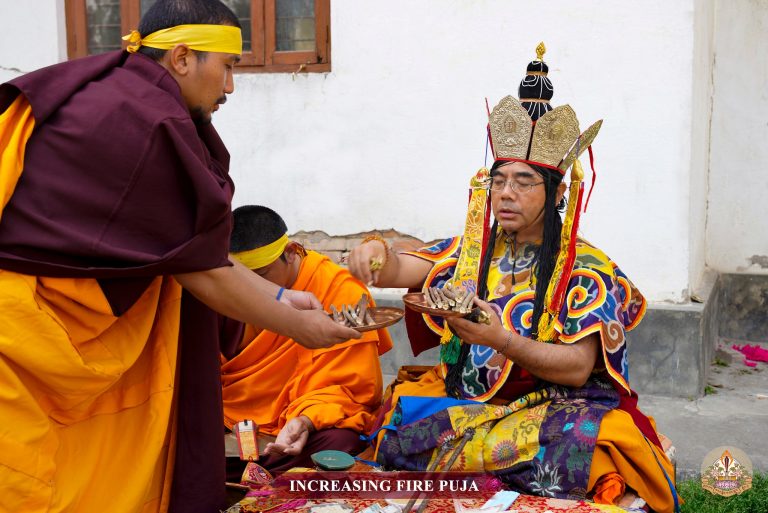
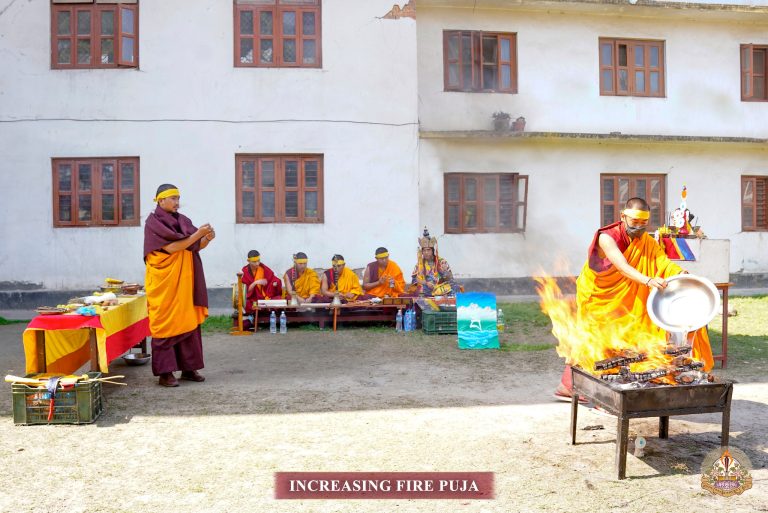
Mudras
Mudras are gestures of the body that represent the appearance of the Wisdom Deities in bodily form. Examples of Mudras are Offering Mudras, Praise Mudras, and Empowerment Mudras. Watching the performance of Mudras is beneficial because it provides a way to gain a profound knowledge of Dharmakaya, Mahakaruna, and Mahasunyata.

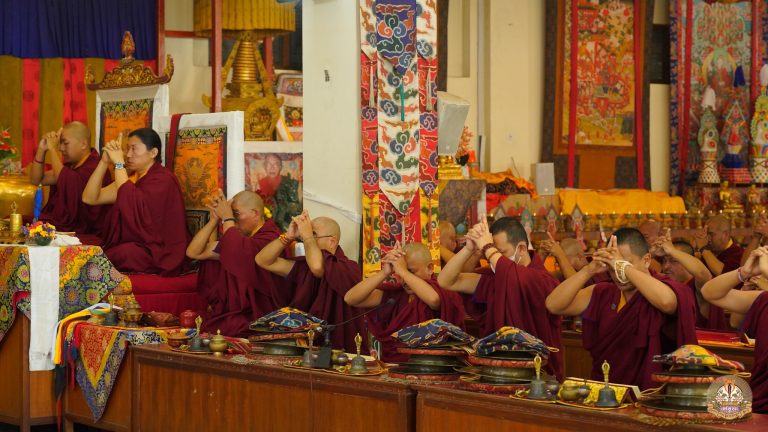
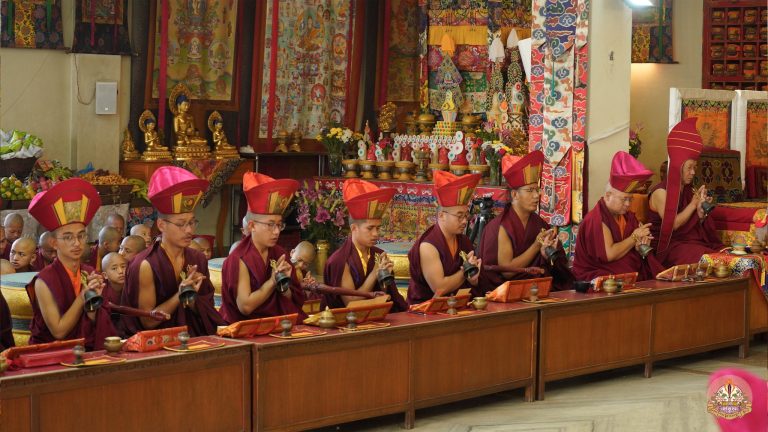
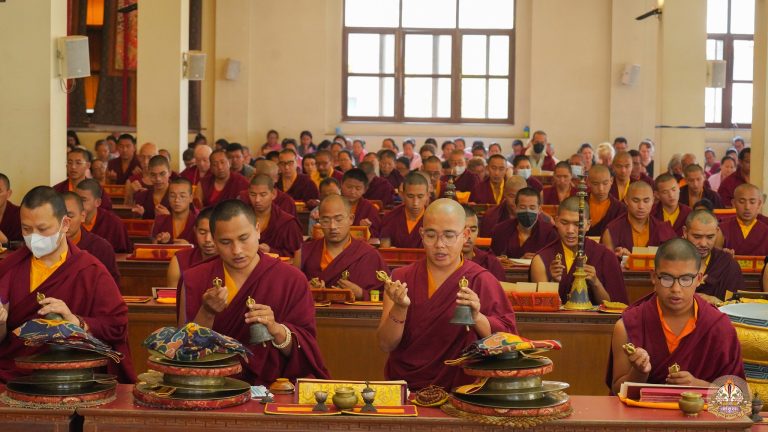
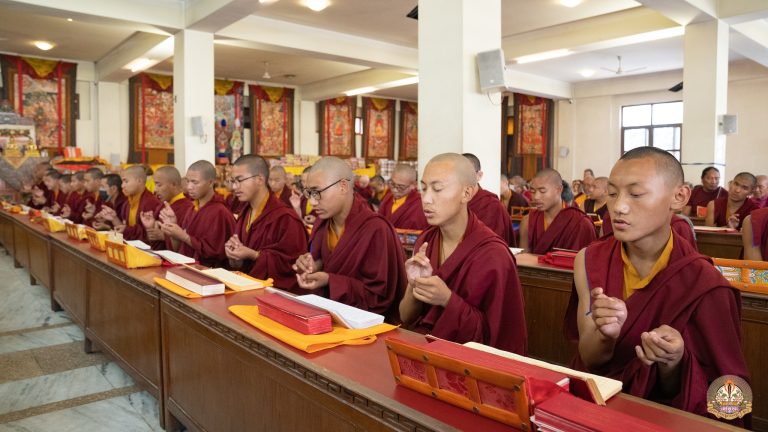
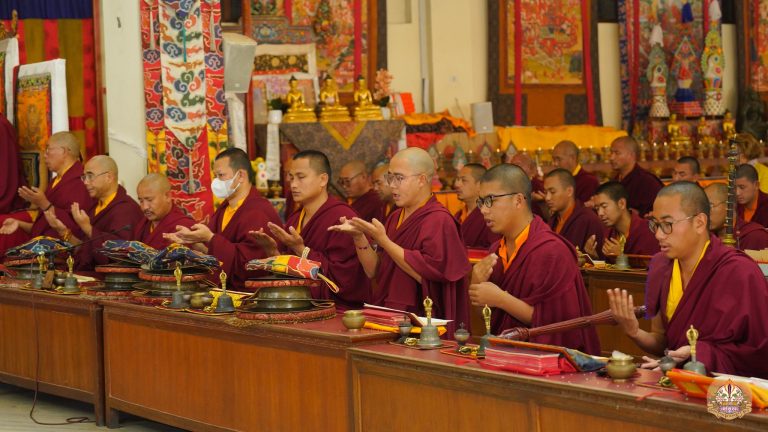
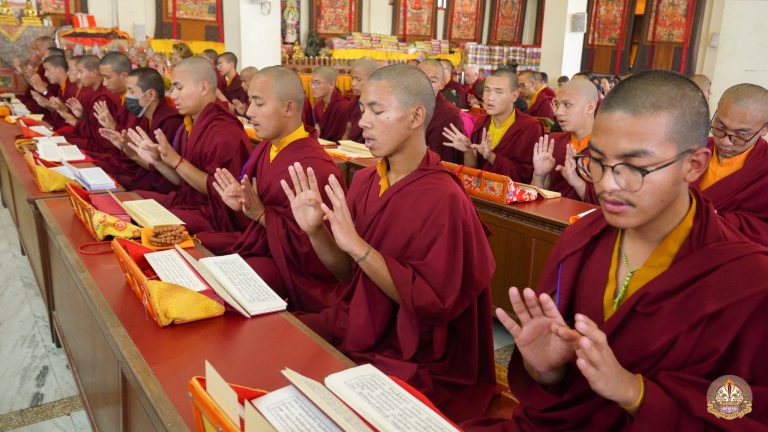
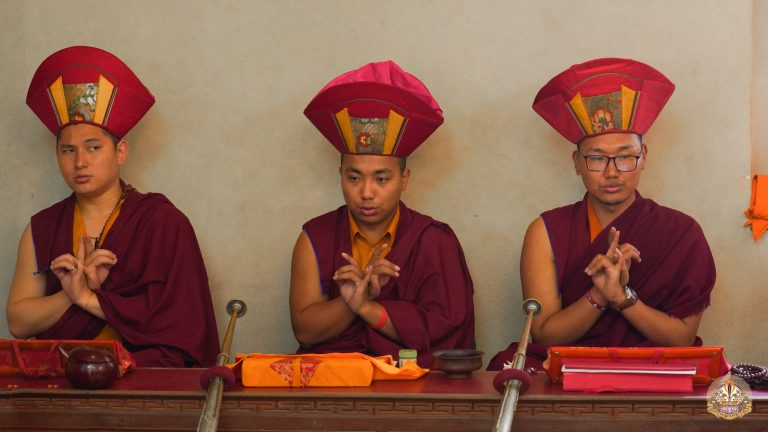
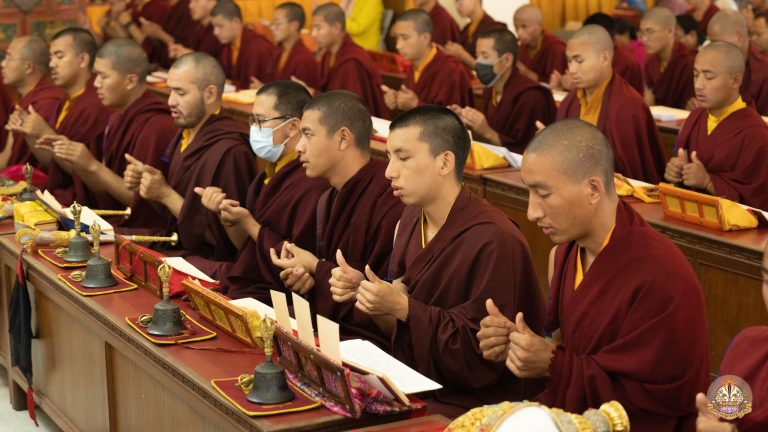
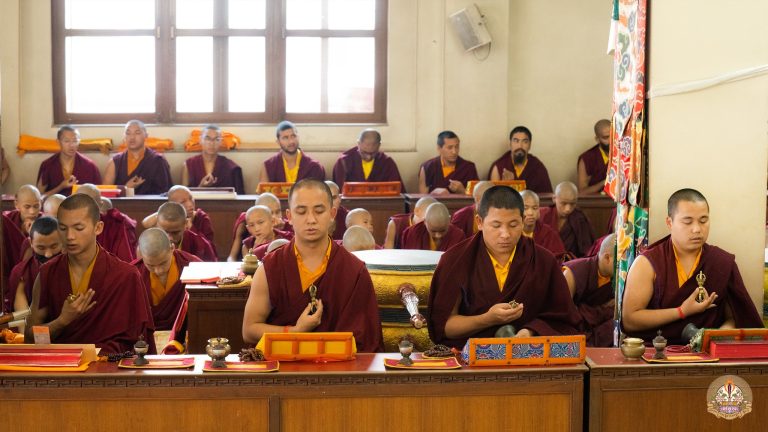
Vajrasattva Pūjā
The Vajrasattva Pūjā is an essential component of the Ngakso Drubchen. It is performed in four to five sessions every day in one of the Mahākāla temples of the monastery by a group of monks who chant thousands of recitations of the 100 syllable Vajrasattva Mantra. In the mornings, this group joins the main Pūjā in the new shrine hall temple where it performs special prayers at the Kilkhor (Mandala) and distributes a sacred drink blessed by Vajrasattva. The Vajrasattva Pūjā is very beneficial for cleansing negative karma and for purification, including all diseases and negative emotions.
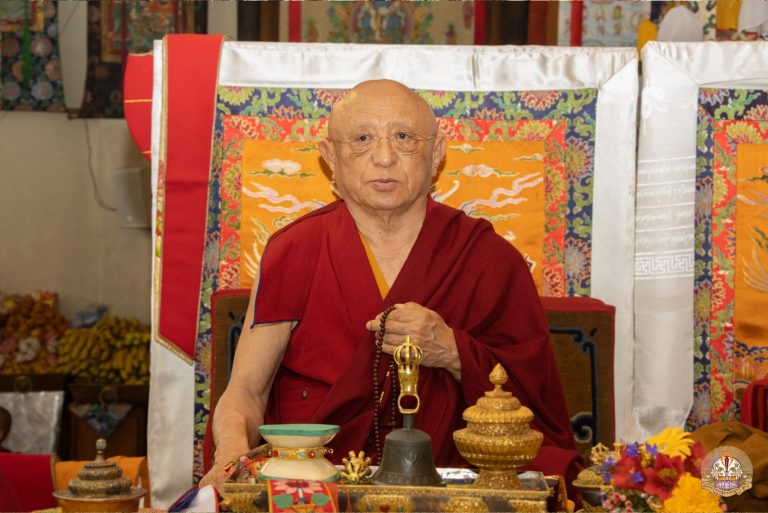
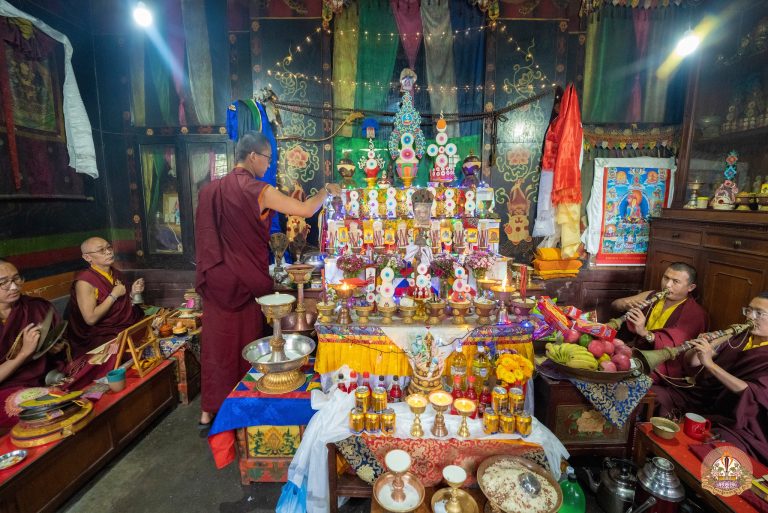
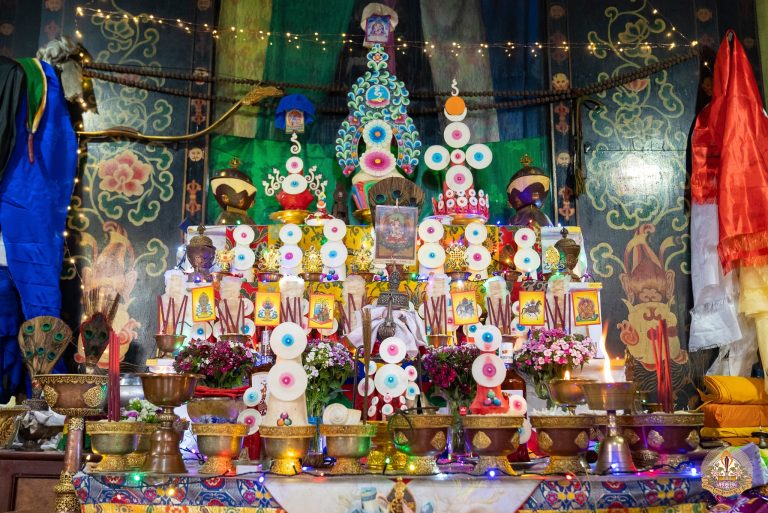
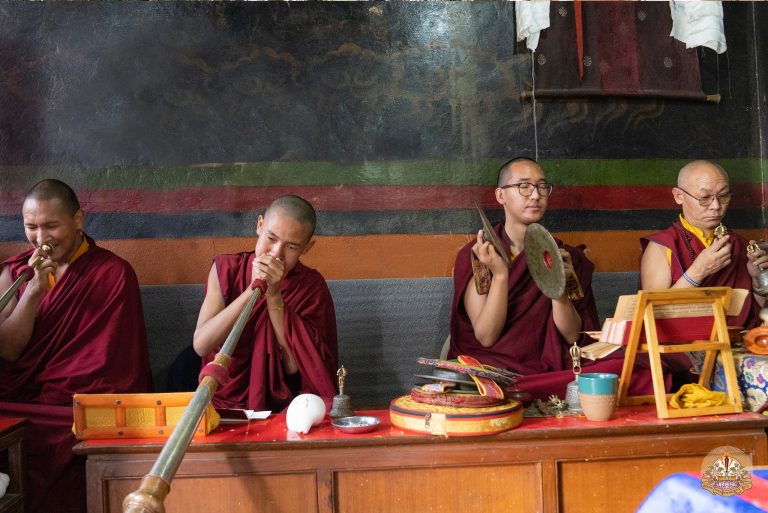
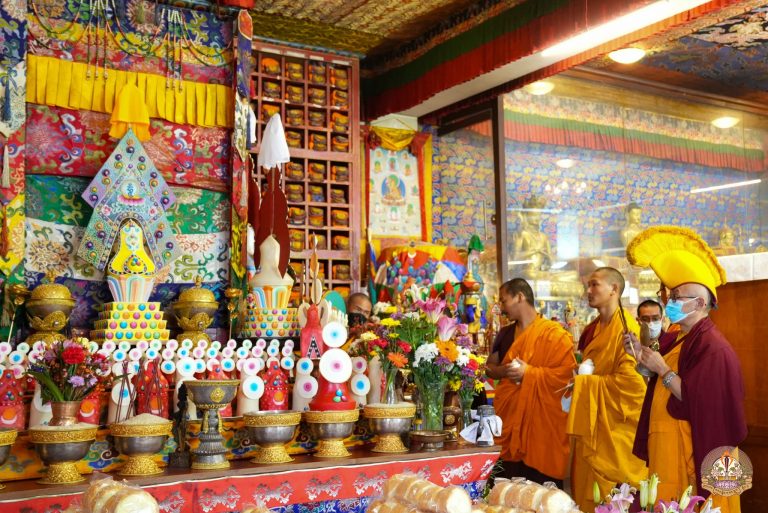
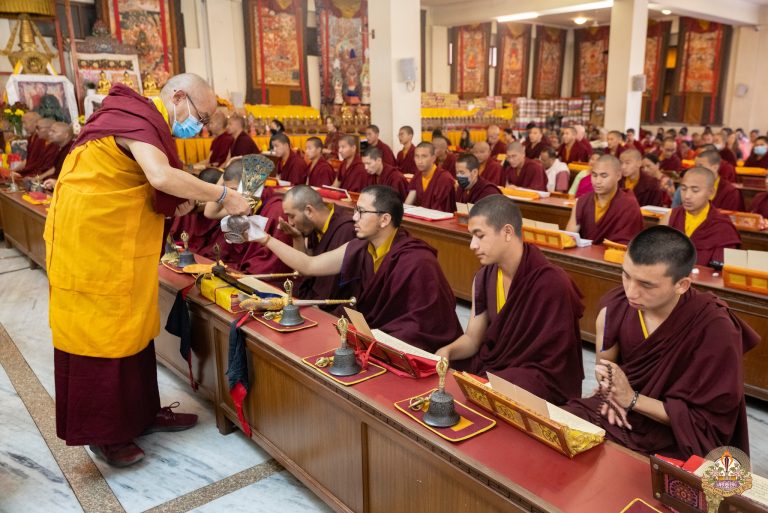
Tsok Offering
Tsok Offering, also known as Ganachakra, is a sacred Vajrayana practice and is one of the most effective methods to achieve enlightenment. Tsok Offering has four aspects: whom to offer to – the Ngakso Deities; what to offer – feast substances/offerings; who offers – practitioners of the Ngakso Drubchen; and why offer – for the accumulation of Wisdom and Merit. The sequence of the Tsok Offering follows a specific order. First, all the Deities from the Supramundane Mandala are welcomed into the Mundane Mandala. Then, the feast substances are blessed by the practitioners. After that, the feast substances are offered to the Deities, followed by the practitioners themselves taking and distributing the feast substances. During the Drubchen, practitioners perform Tsok Offering each day.
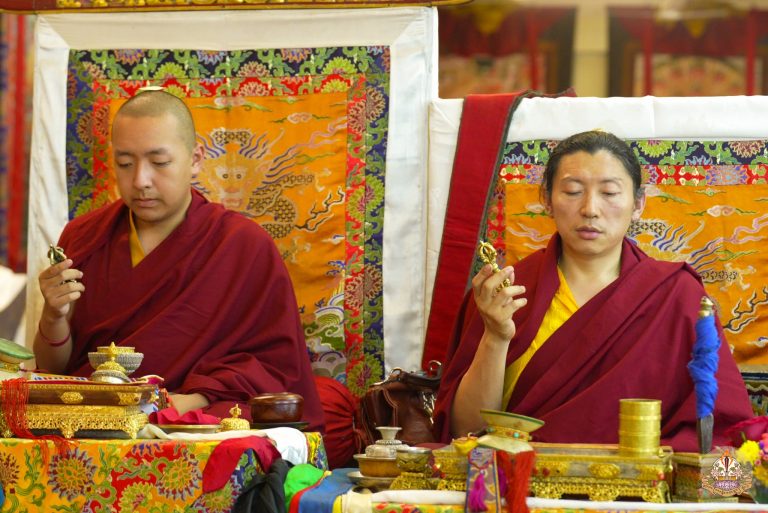
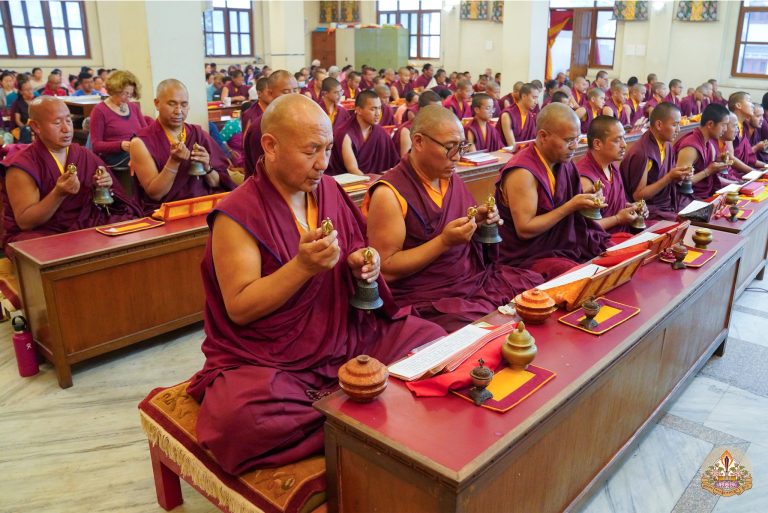
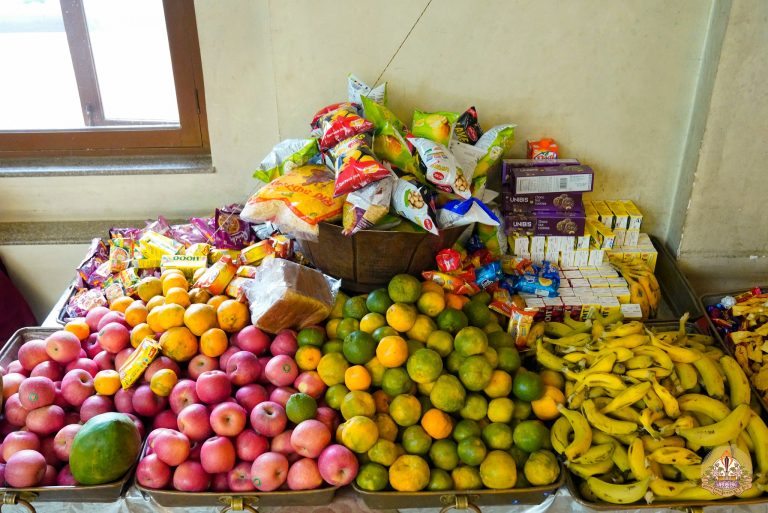
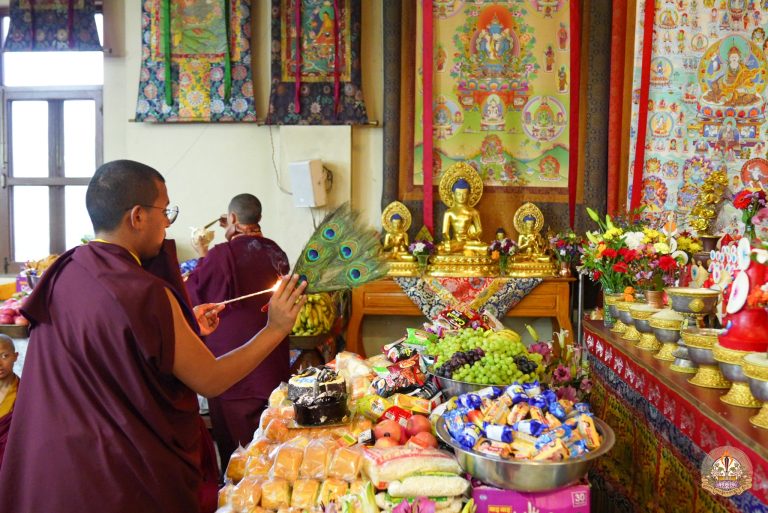

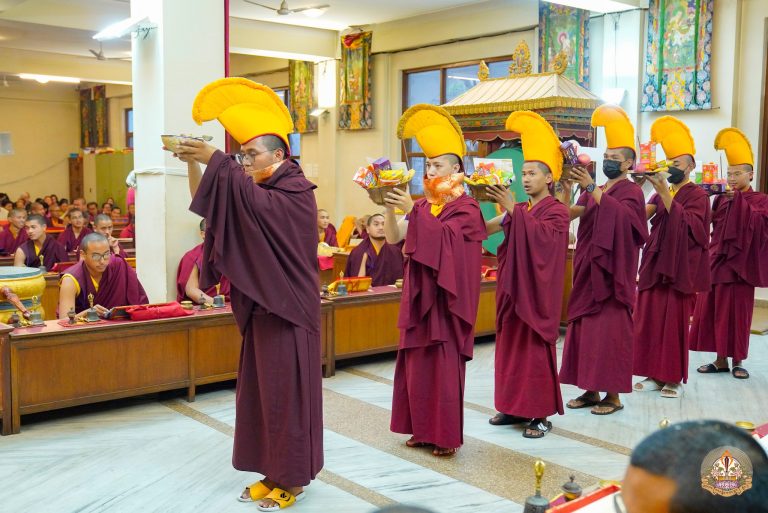
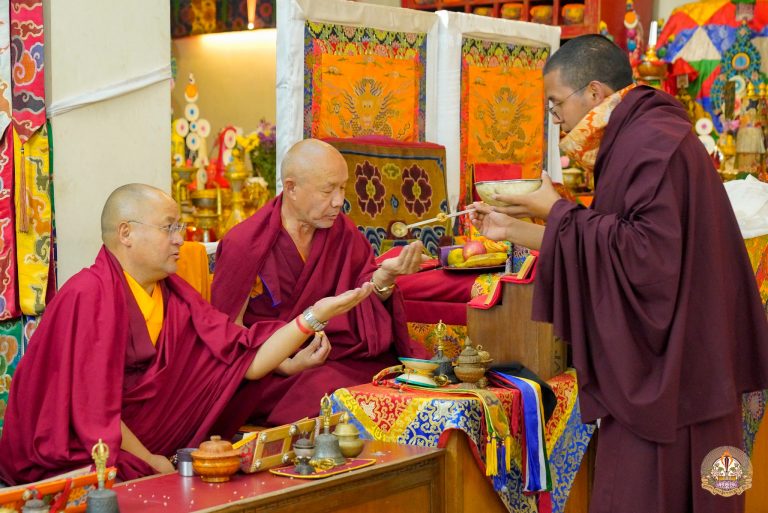
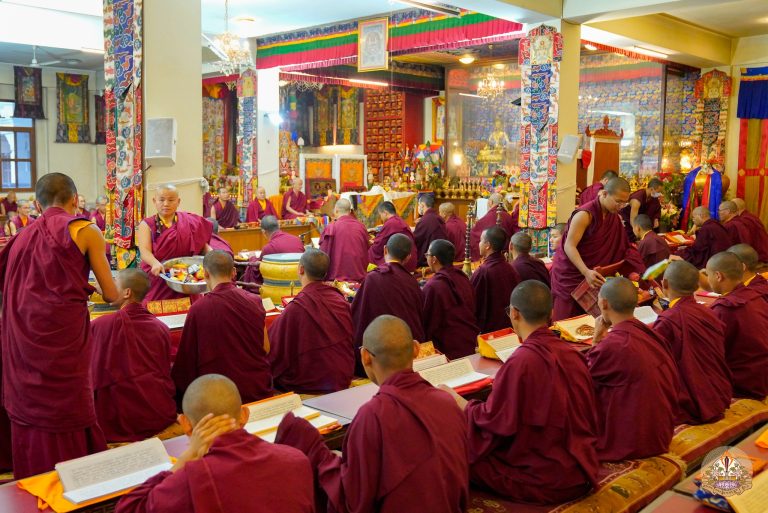
Mahākāla Pūjā
All Dharma Protector Deities are known as Mahākāla. Male Mahākāla Deities are responsible for removing outer obstacles while female Mahākāla deities help retain inner accomplishments. Mahākāla Pūjā is performed every day during the Drubchen at 2:30 pm inside the new shrine hall temple.
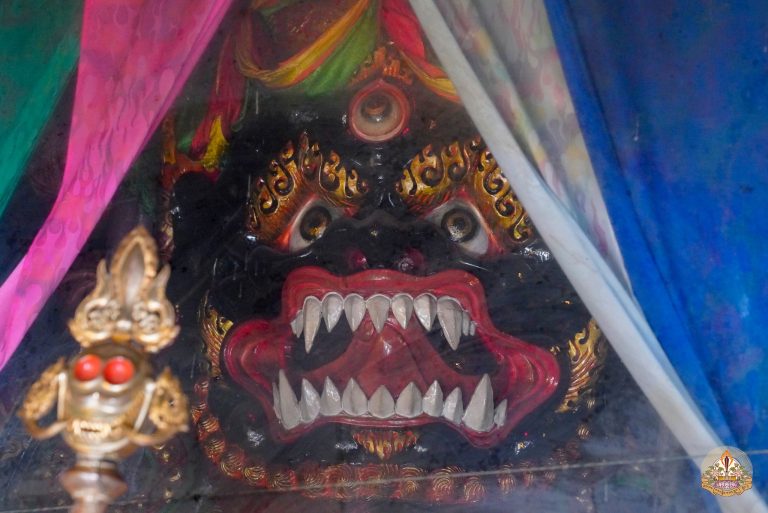
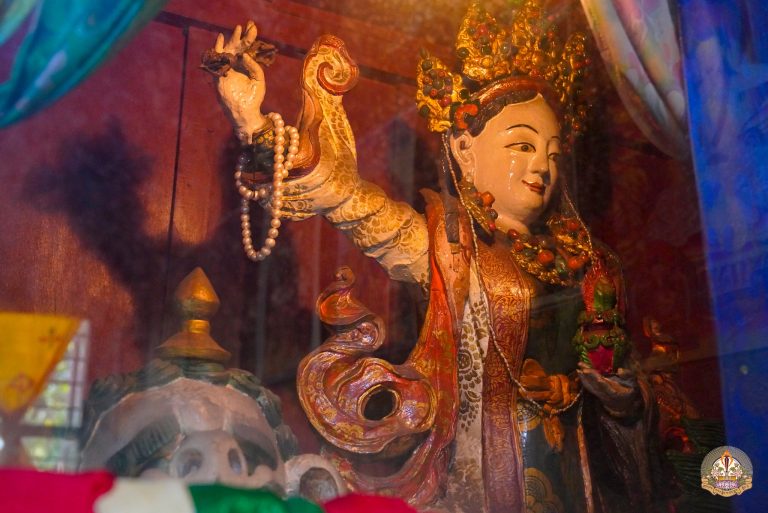
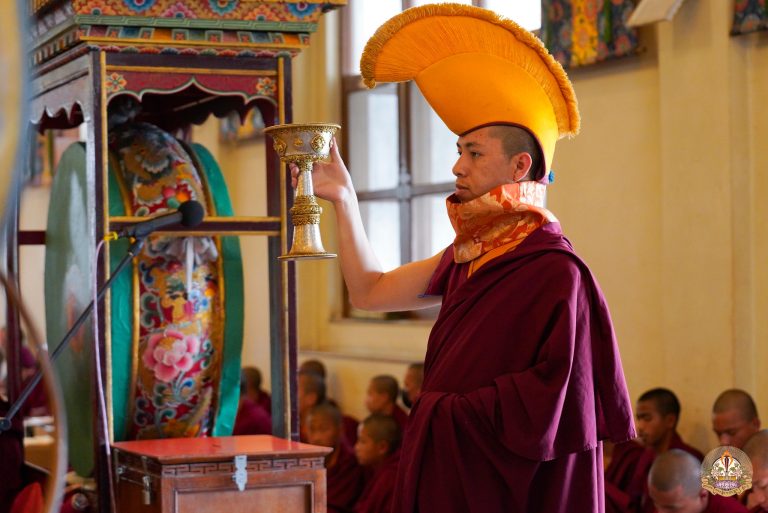
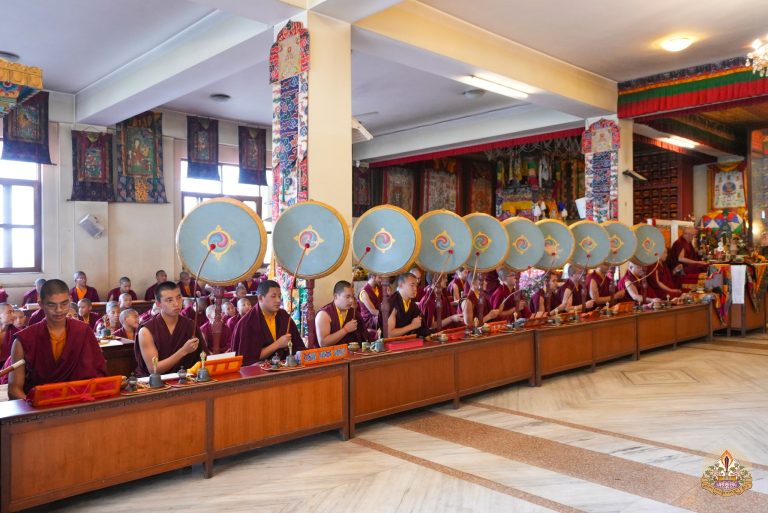
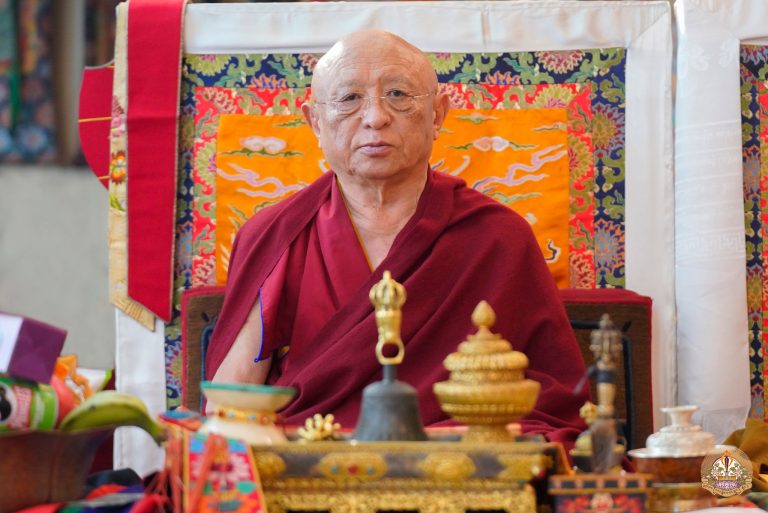
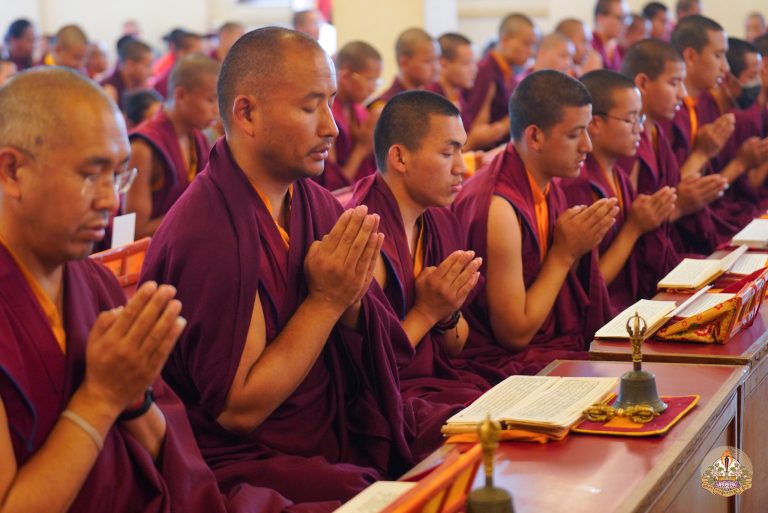
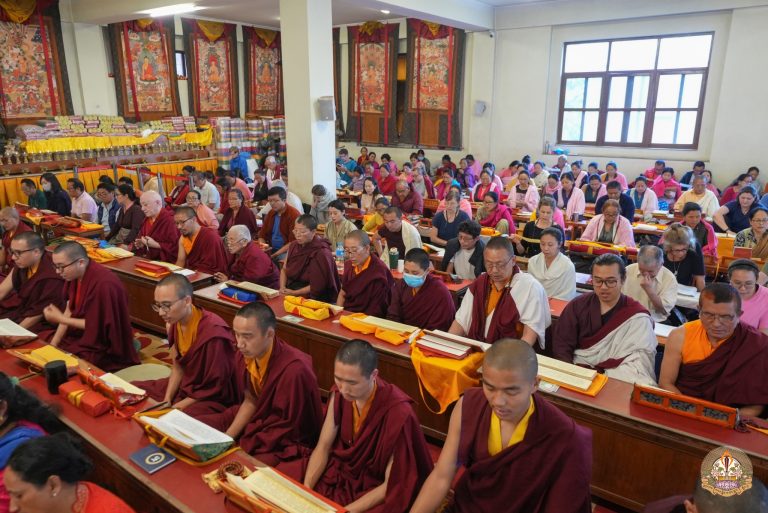
4 Kings’ Pūjās
The 4 Kings’ Pūjās are performed to honor each of the 4 Kings who are seated in the four directions of the monastery compound. The Pūjās are conducted simultaneously by small groups of monks daily at 1:30 pm for protection from all types of obstacles that may arise during the Drubchen.
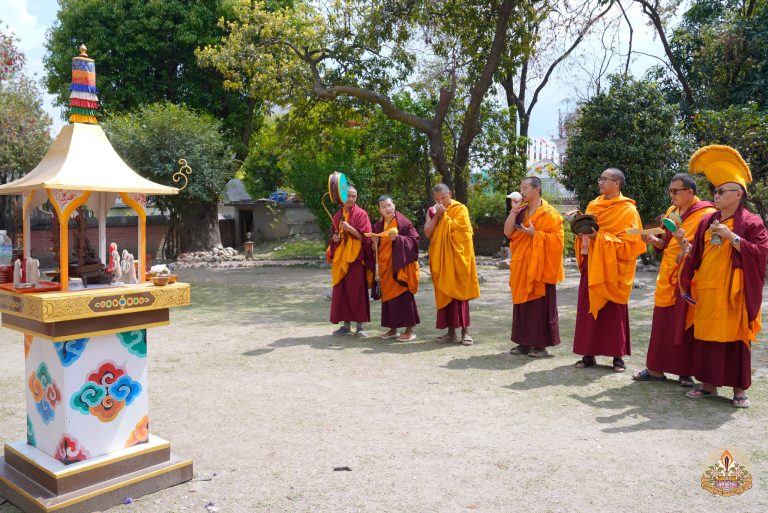
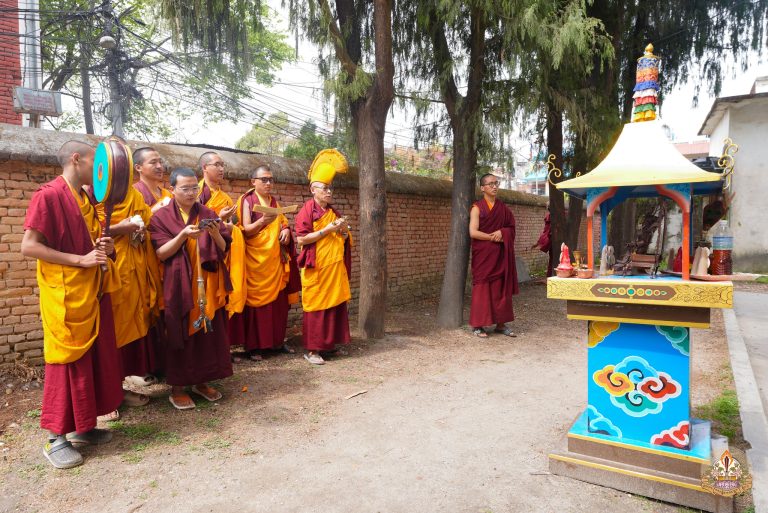
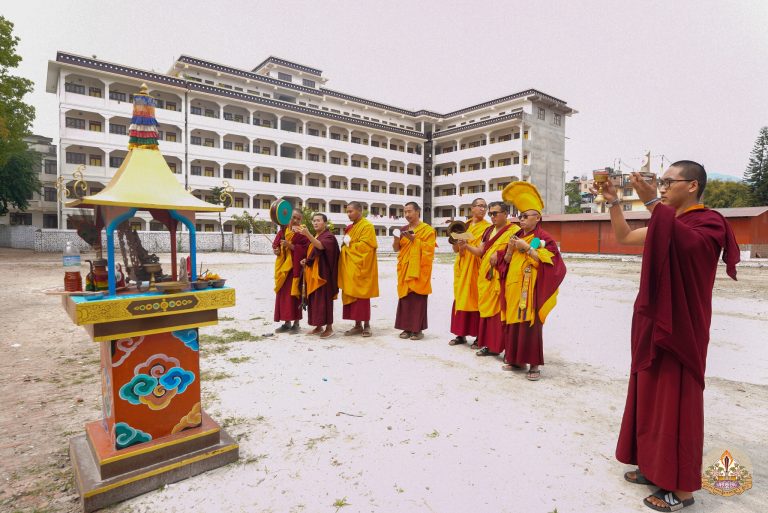
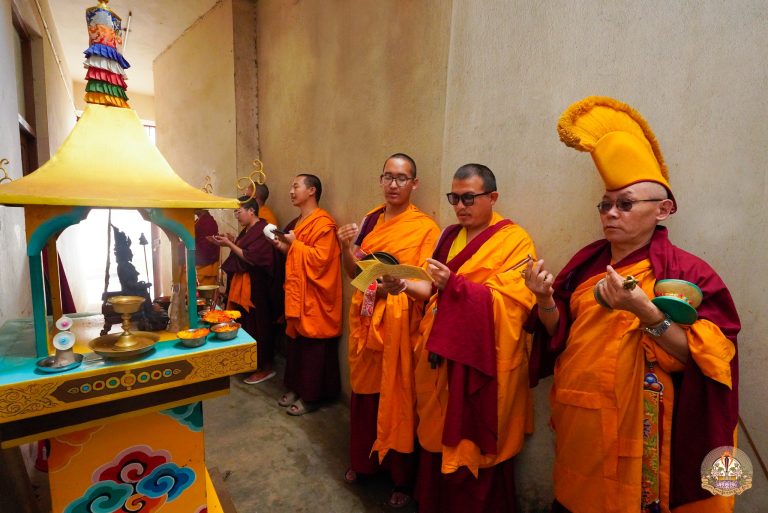
Cleansing Ceremony
The Cleansing Ceremony is a ritual for the purification of imperfections. It is performed by any of the Rinpoches each day during the Drubchen between 3 to 6 pm by sprinkling water on icons, books, and stupas. It is very beneficial for purifying obscurations of the six realms accumulated through negative actions of the body, speech, and mind.
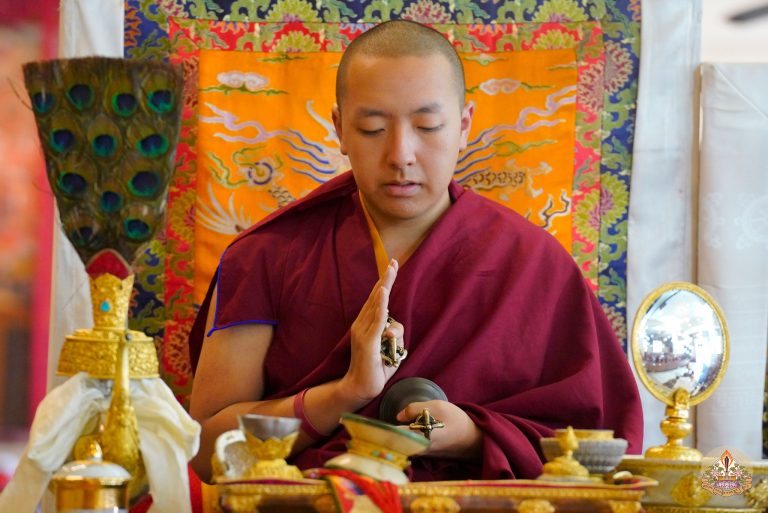
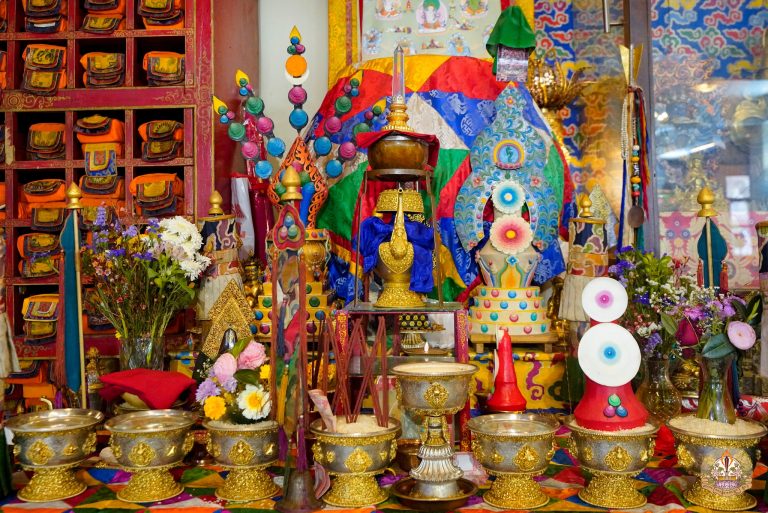
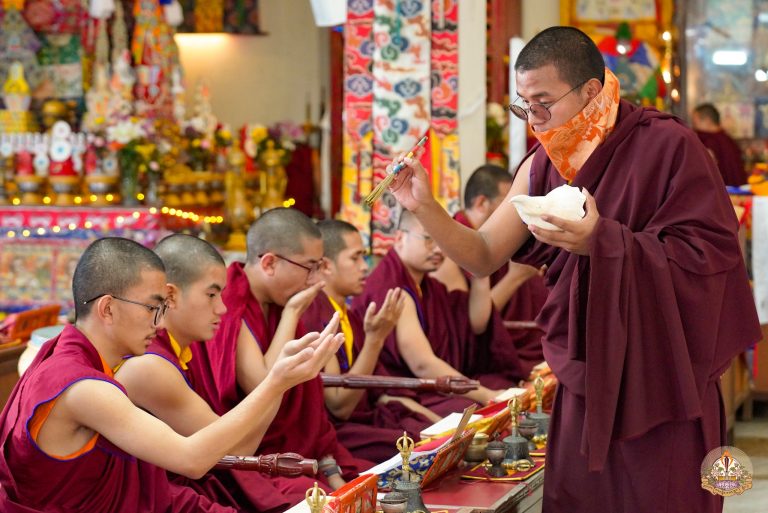
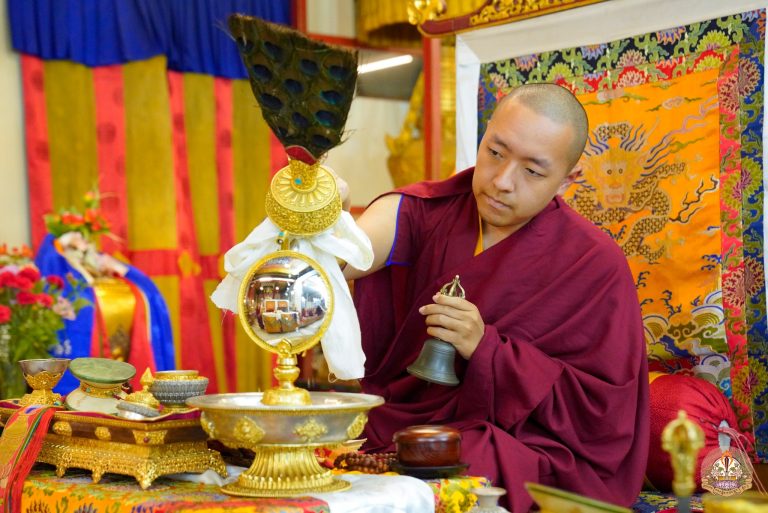
Empowerment
Empowerment is an initiation process that introduces and permits one to participate in a particular Vajrayana practice. In the Drubchen, four types of Empowerment are given:
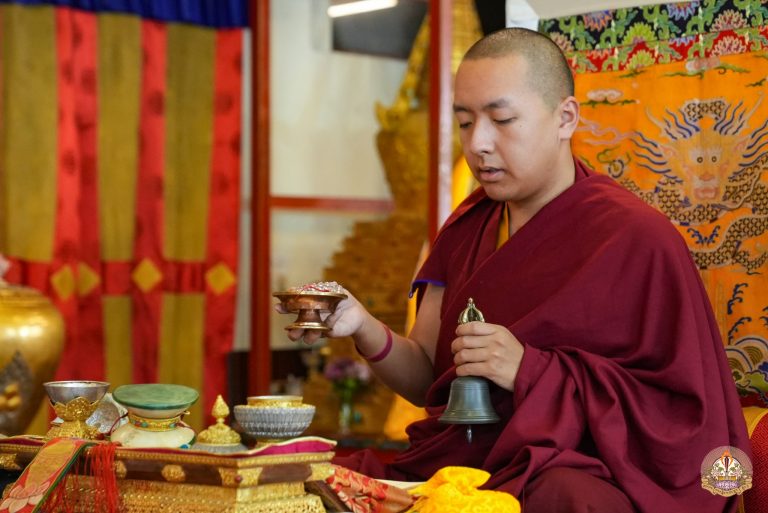
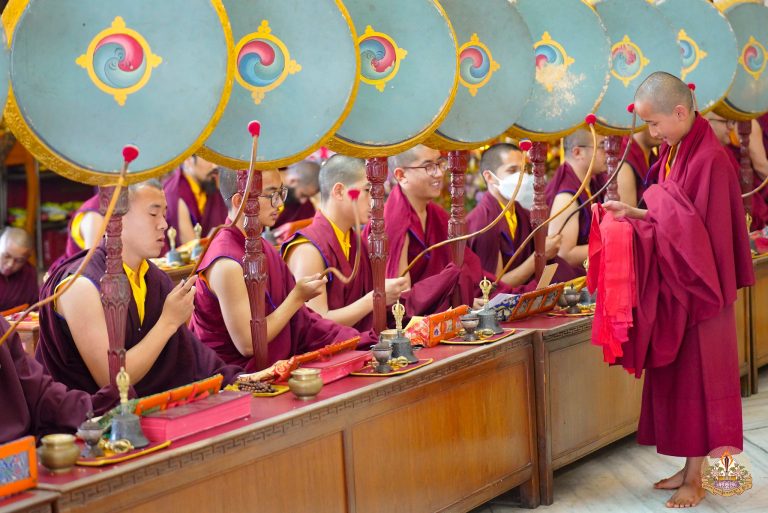
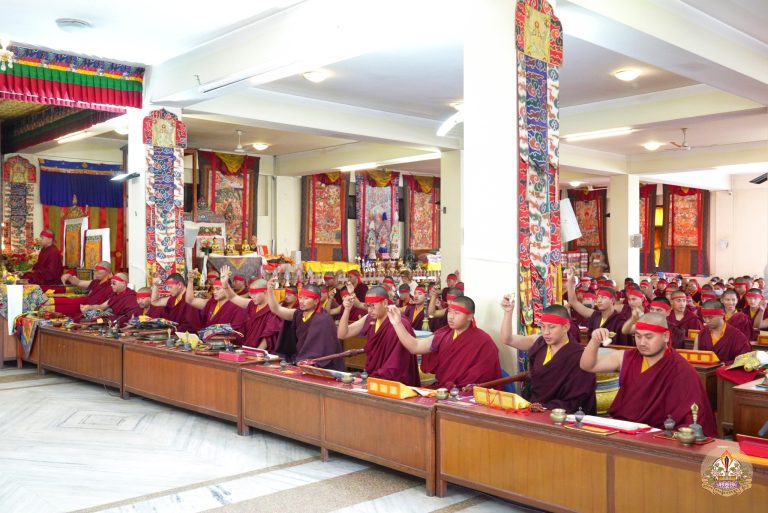
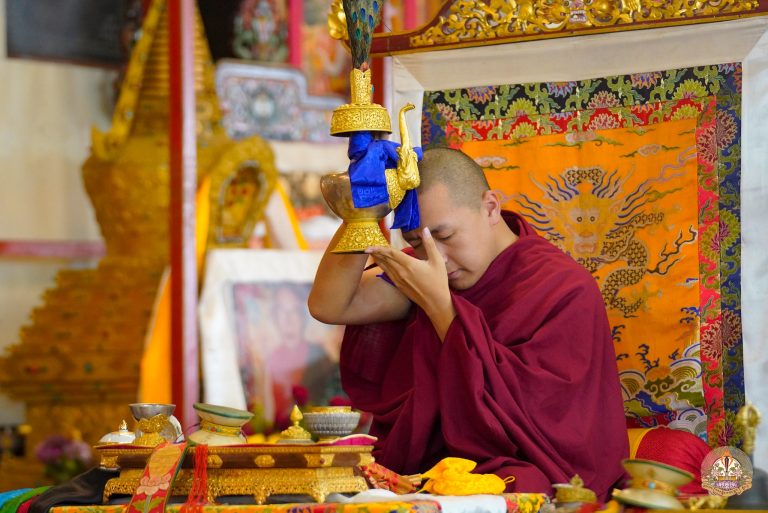
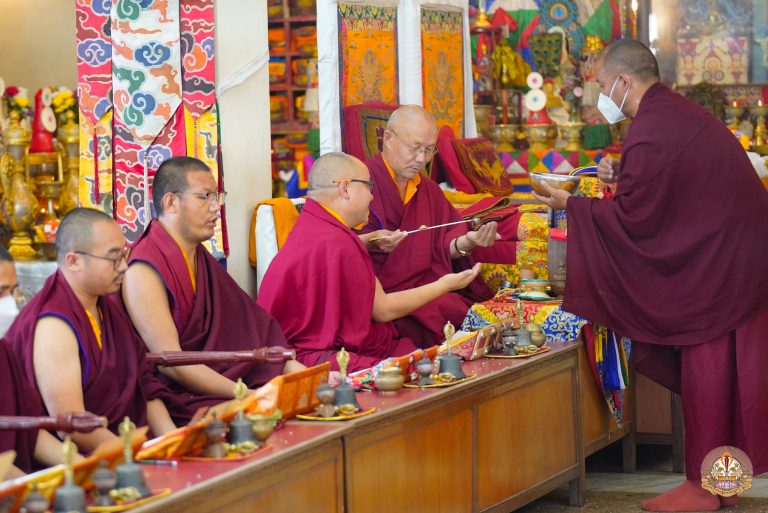
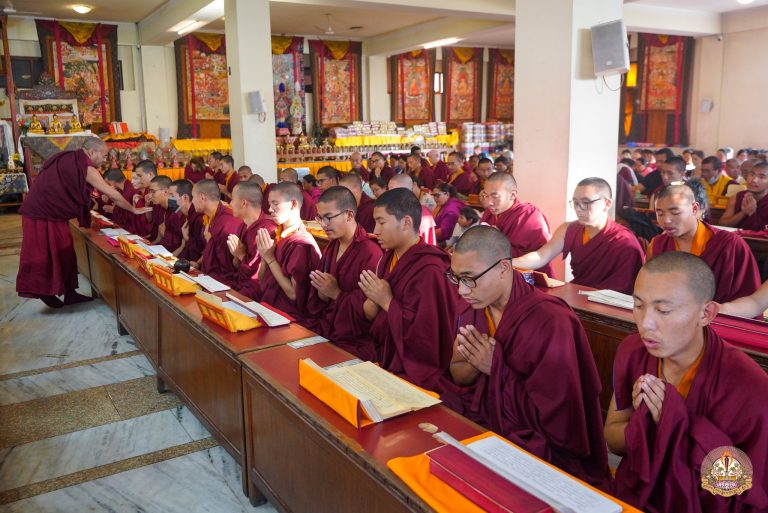
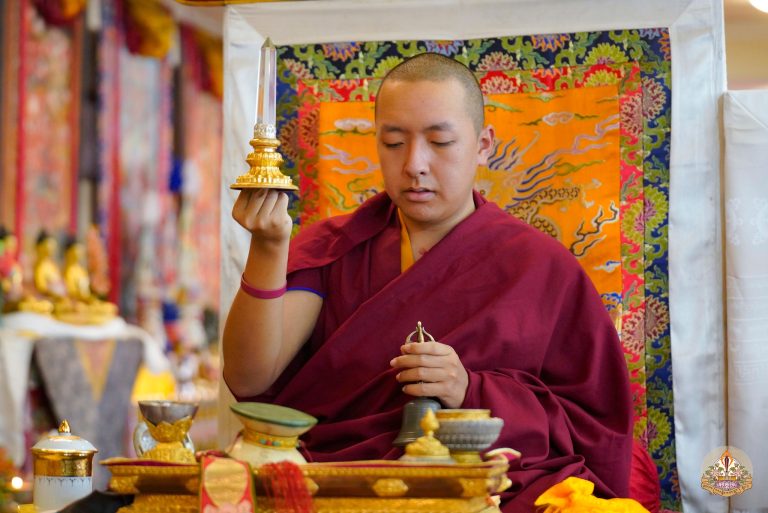
Torma
Tormas are ritual sculptures usually made from flour and butter that represent desirable qualities that please the senses. Tormas can be categorized as follows:
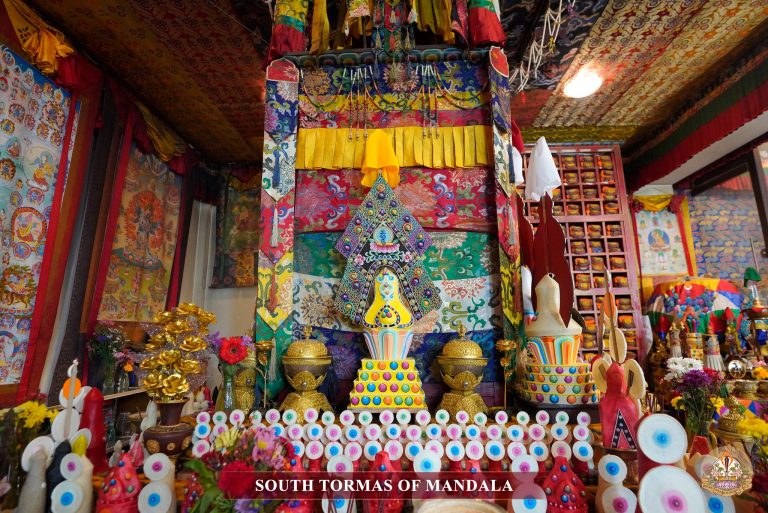
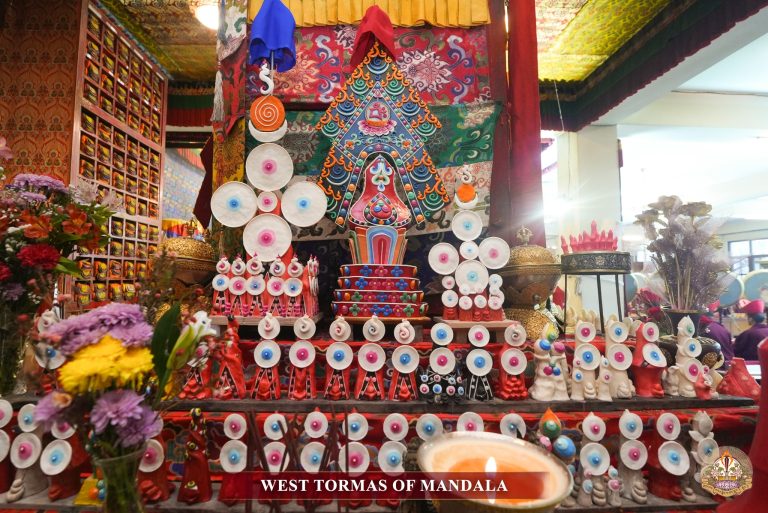
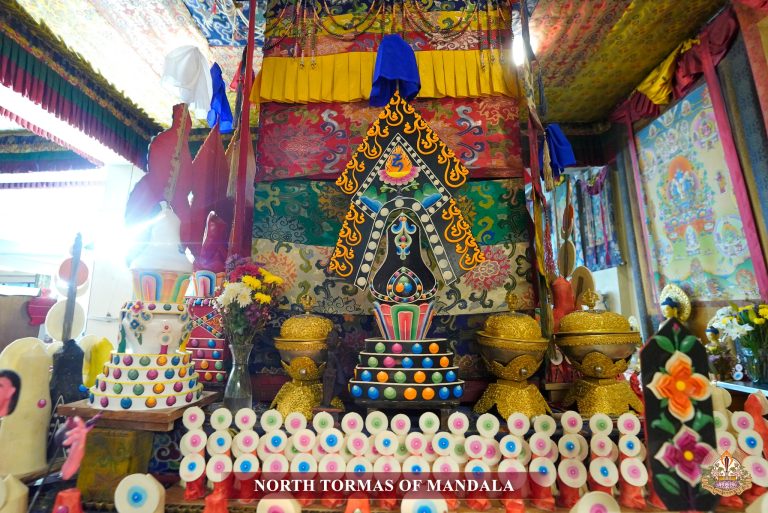

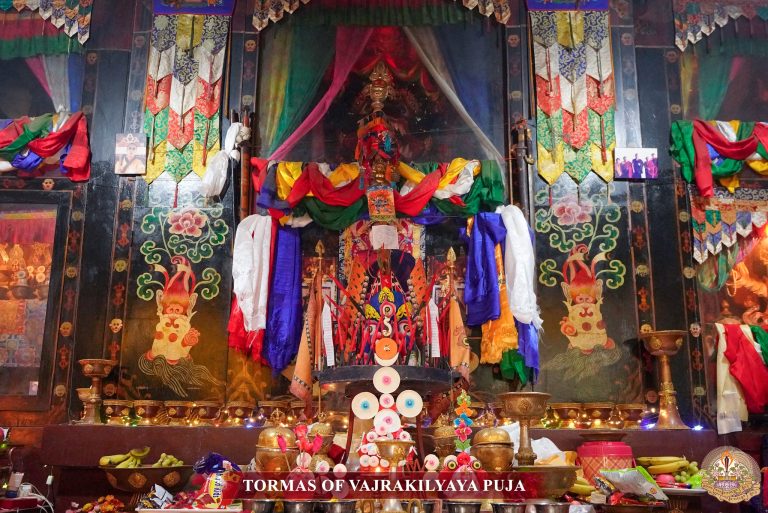
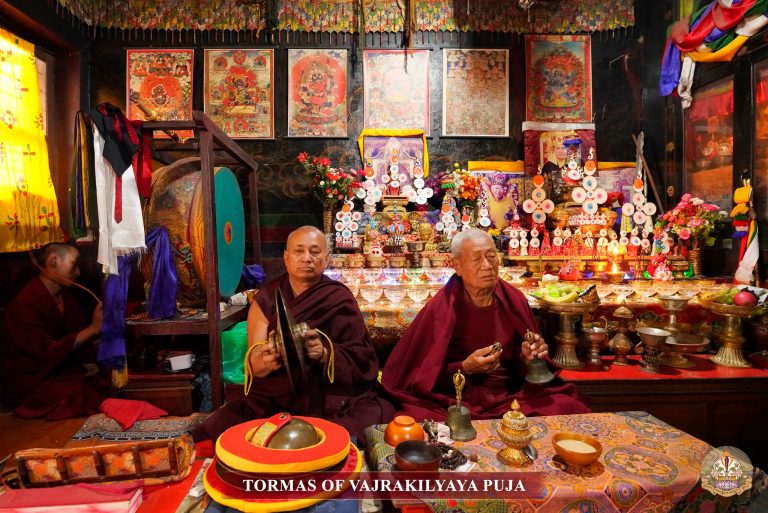
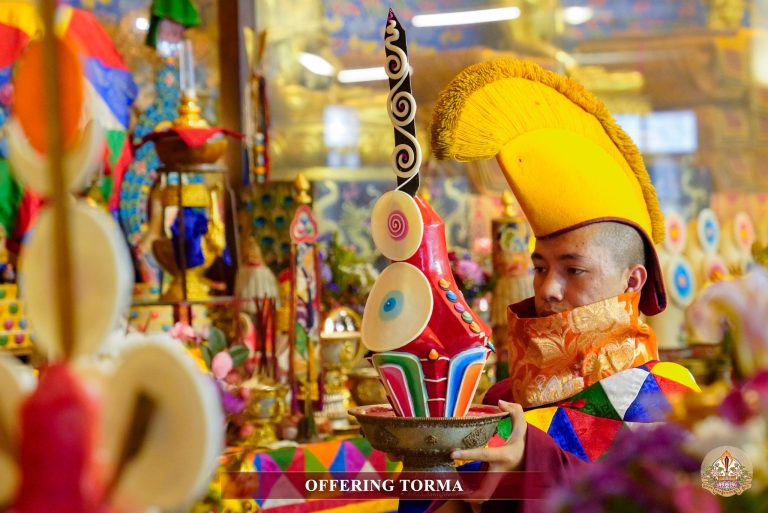
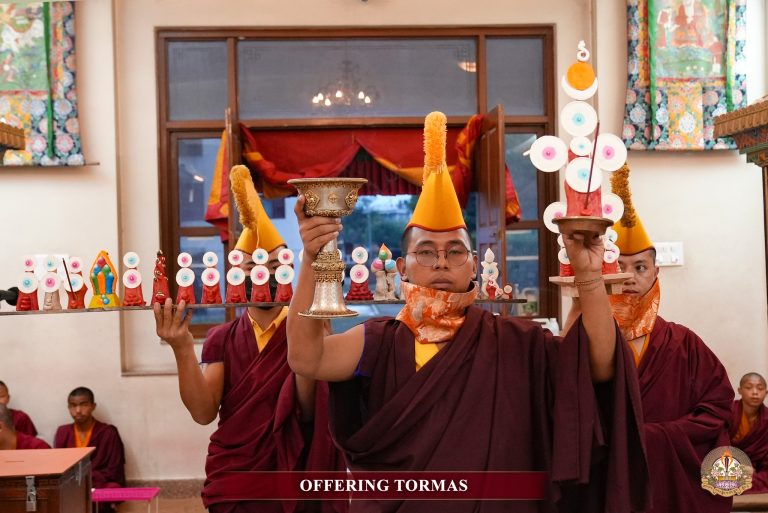
Banishing Hindrances and Bringing Down Blessings
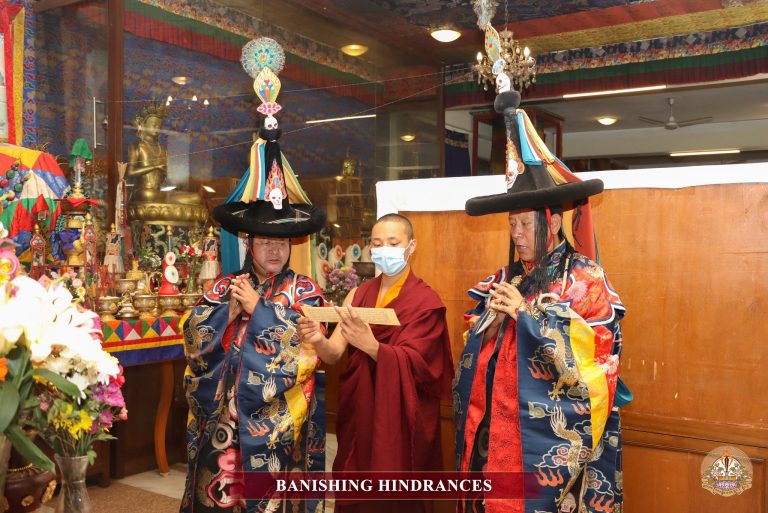
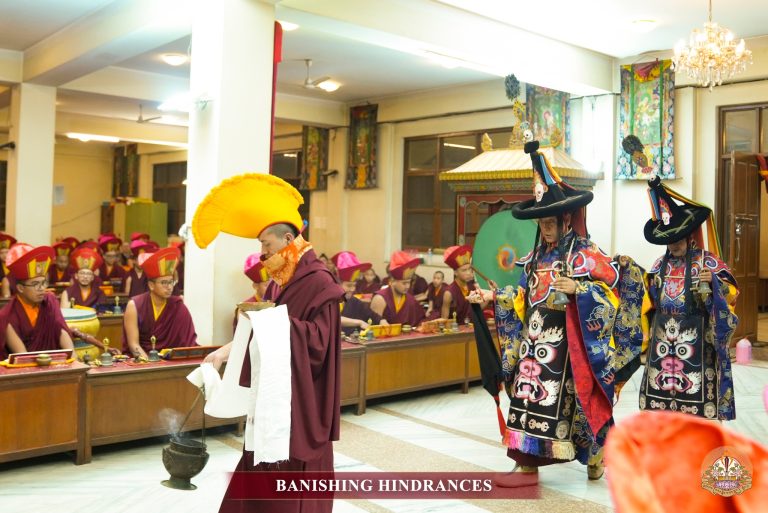
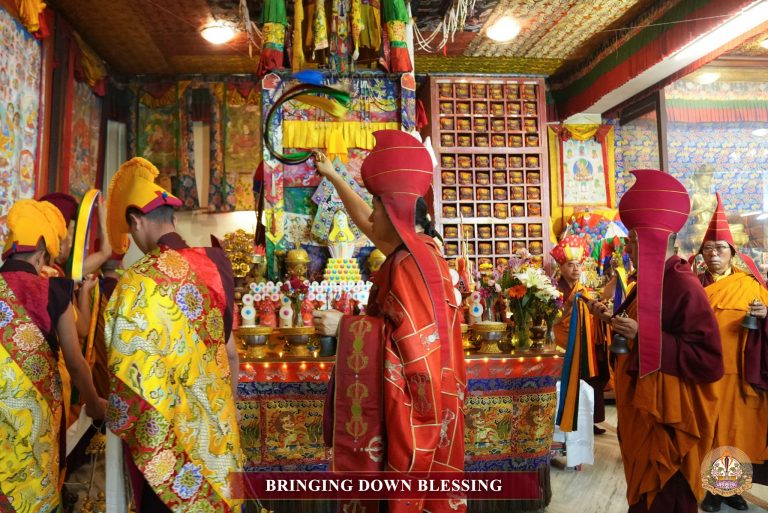

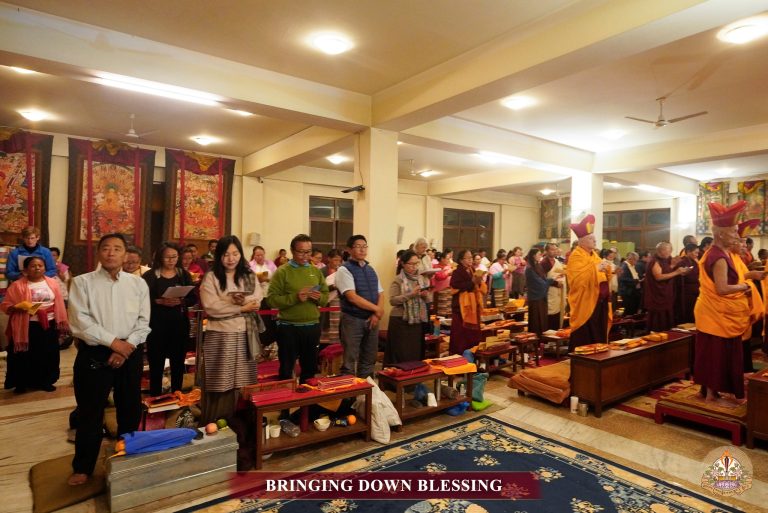
Vajrakilaya Pūjā
The Vajrakilaya Pūjā of the Drubchen, which begins one day before the beginning of the Drubchen, is performed by a group of monks every day for nine days and ends on the eighth day of the Drubchen. This Pūjā removes outer (all diseases), inner (negative emotions), and secret (concepts and thoughts) obstacles and gives protection during the Drubchen. On the ninth day of the Vajakilaya Pūjā, the Poisonous Weapon Torma used in the Vajakilaya Pūjā are thrown and burnt at around 3:30 pm signifying discarding all three types of obstacles of sentient beings and practitioners. Afterwards, the Siddhi of Vajrakilaya is received and given to the participants inside the main shrine hall.
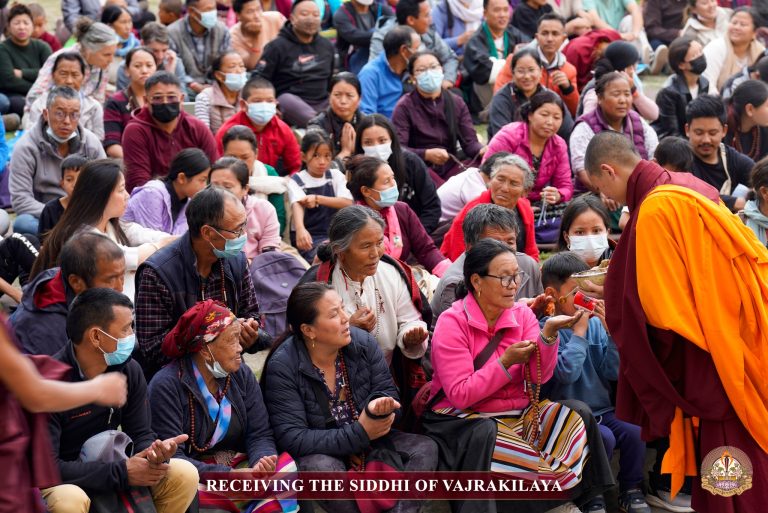
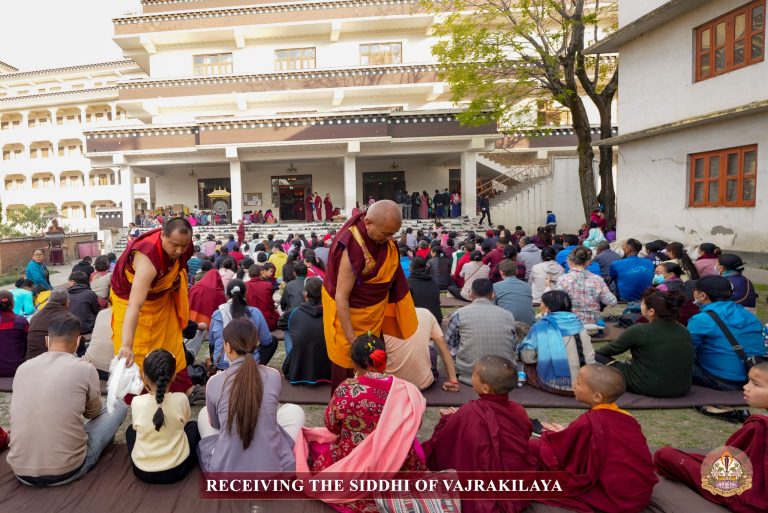

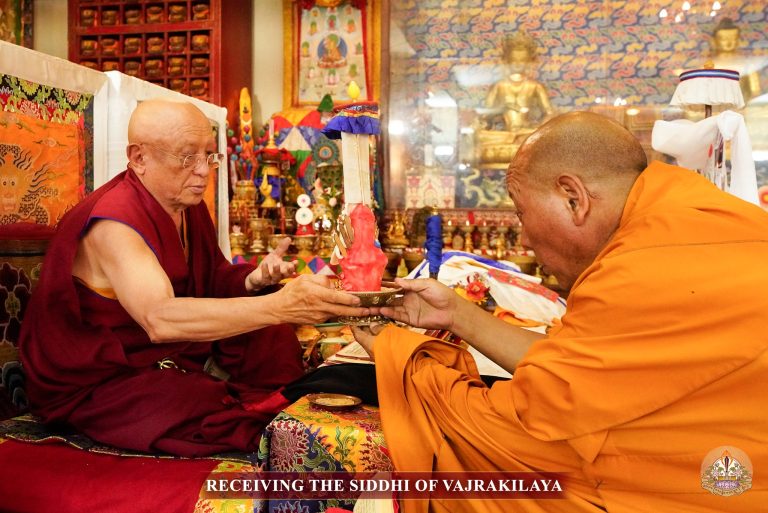
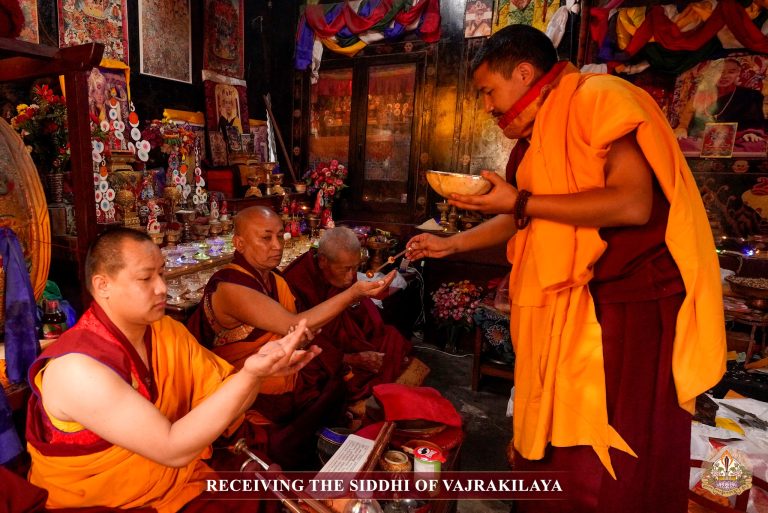
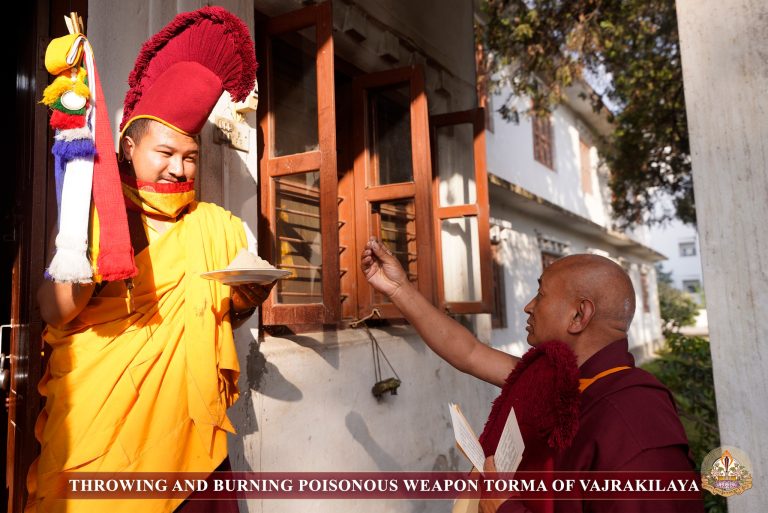
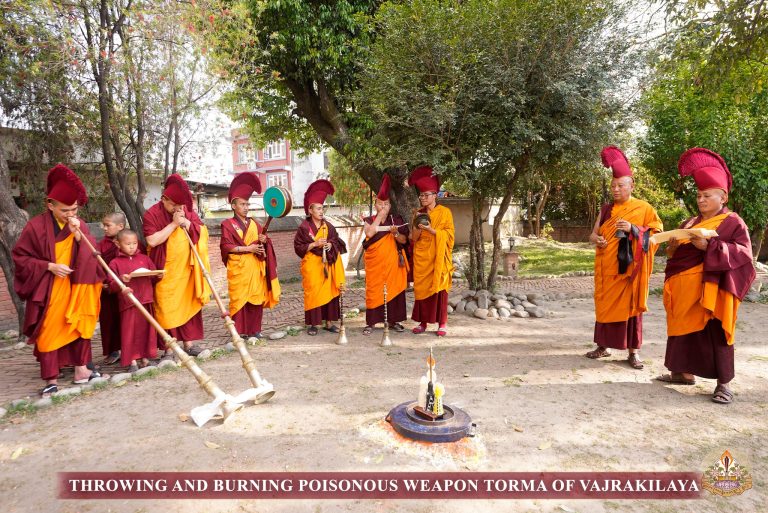
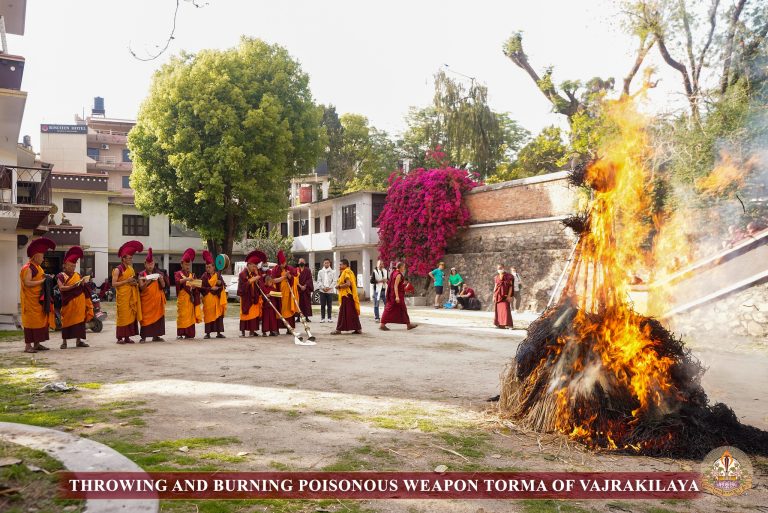
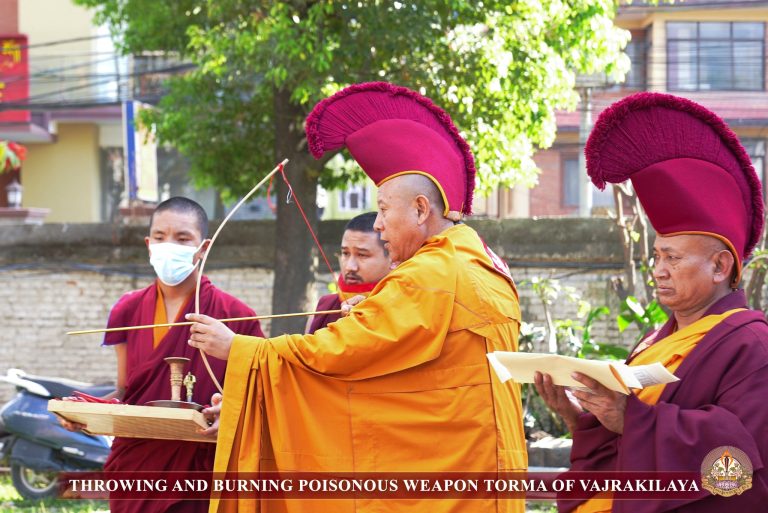
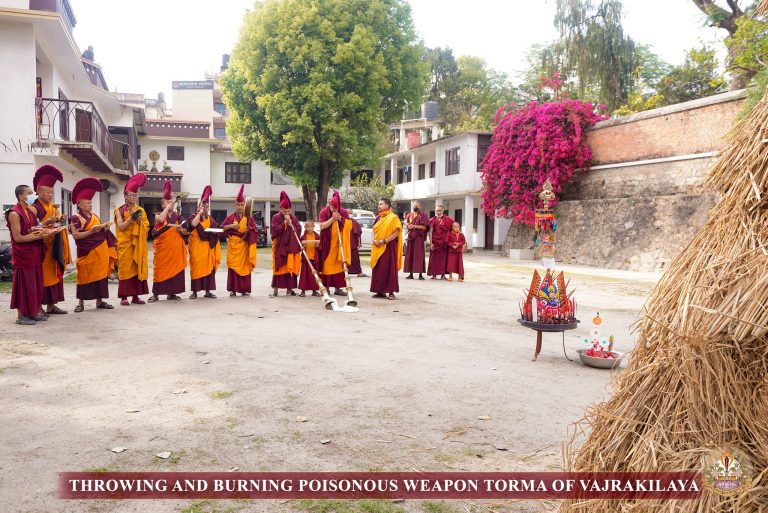
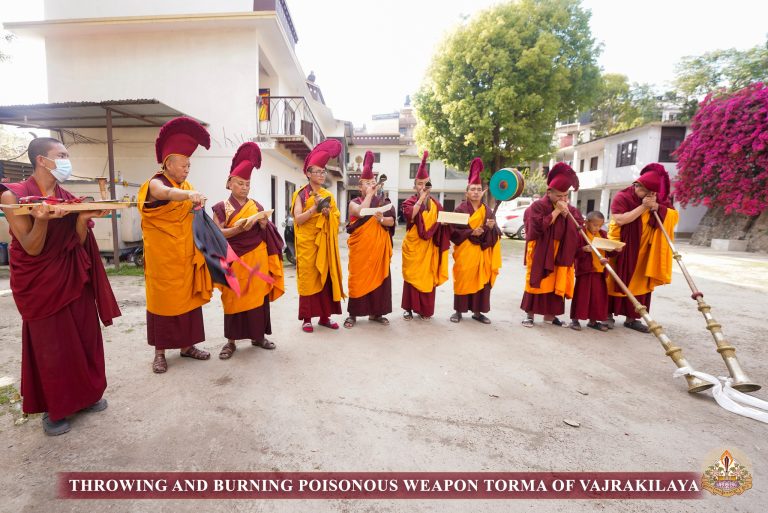
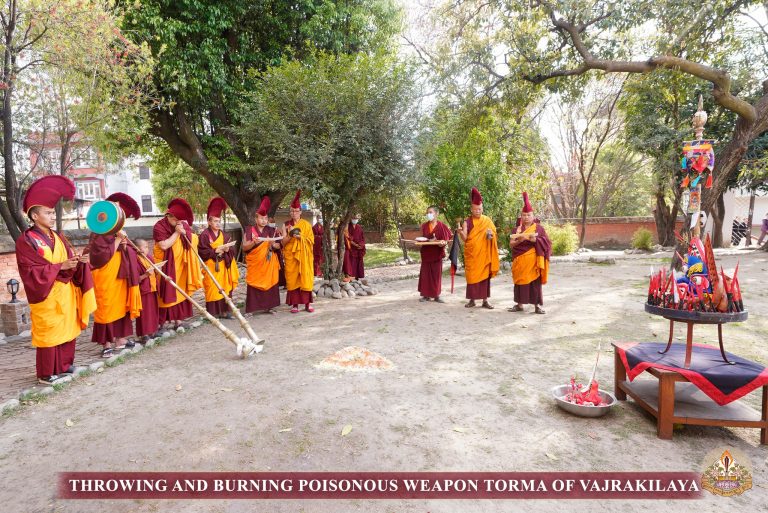
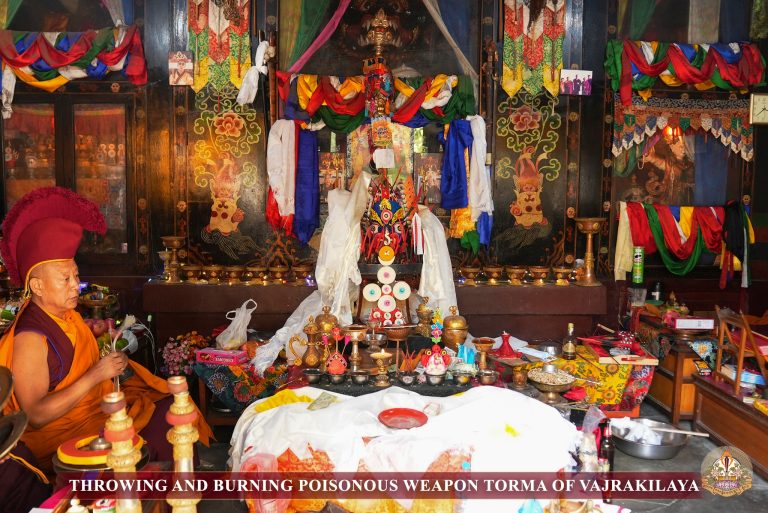
Day 9
On the final day is the opportunity to receive the Siddhis accumulated throughout the nine days of the Drubchen. At 2:30 am, the Ngakso Pūjā is performed once again by all participants gathered. At around 8 am, there is a pause to focus on receiving the Siddhis. First, the participants perform the Banishing Hindrances Ritual, the Bringing Down Blessings Ritual, and Ngakso Mantra chanting. Then, two Vajra Masters receive Amṛta, Blessings, and Tsok (which are the Sublime and Ordinary Siddhis of Kaya, Waka, Chitta, Guna, and Karma). Next, those inside the temple followed by the thousands of participants waiting outside receive the Siddhis from the Rinpoches and senior monks.
At the same time, a group of monks performs an Increasing Fire Pūjā. Monks and lay practitioners inside the main shrine hall continue performing the paused Ngakso Pūjā. After each participant has received the Siddhis, they have the opportunity to offer khatag to the Rinpoches and monks.
Prayers of thanks are offered to the 4-Kings which frees them from their responsibility of protecting the Drubchen. Everyone performs Butter Lamp Mönlam with the aspiration that all sentient beings radiate Compassion and Wisdom from inside and out. They also perform Tashi Mönlam with the aspiration that there is auspiciousness for all sentient beings which marks the conclusion of the Drubchen.
